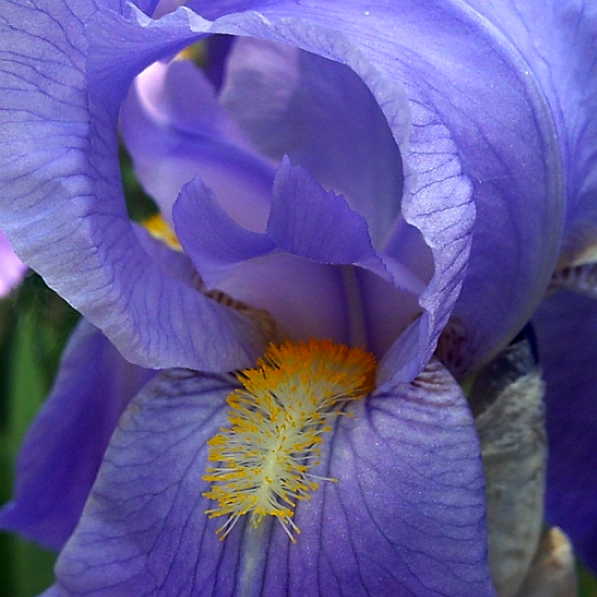Baia Mare is the biggest and most important city of Northern Romania. Today I want to share some of the sights of this rather strange place, which is a bit different from the typical Transylvanian city. As usual, I will make some comments. Beware that, despite the many buildings in ruin, this is one of the richest places in Romania, mainly due to illegal logging and the rampant corruption. And what prevents unwanted regards more than a ruined façade masking unimaginable wealth?!

We begin with the Maramures Prefecture & County Council, built in the brutalist style which I vividly dislike.
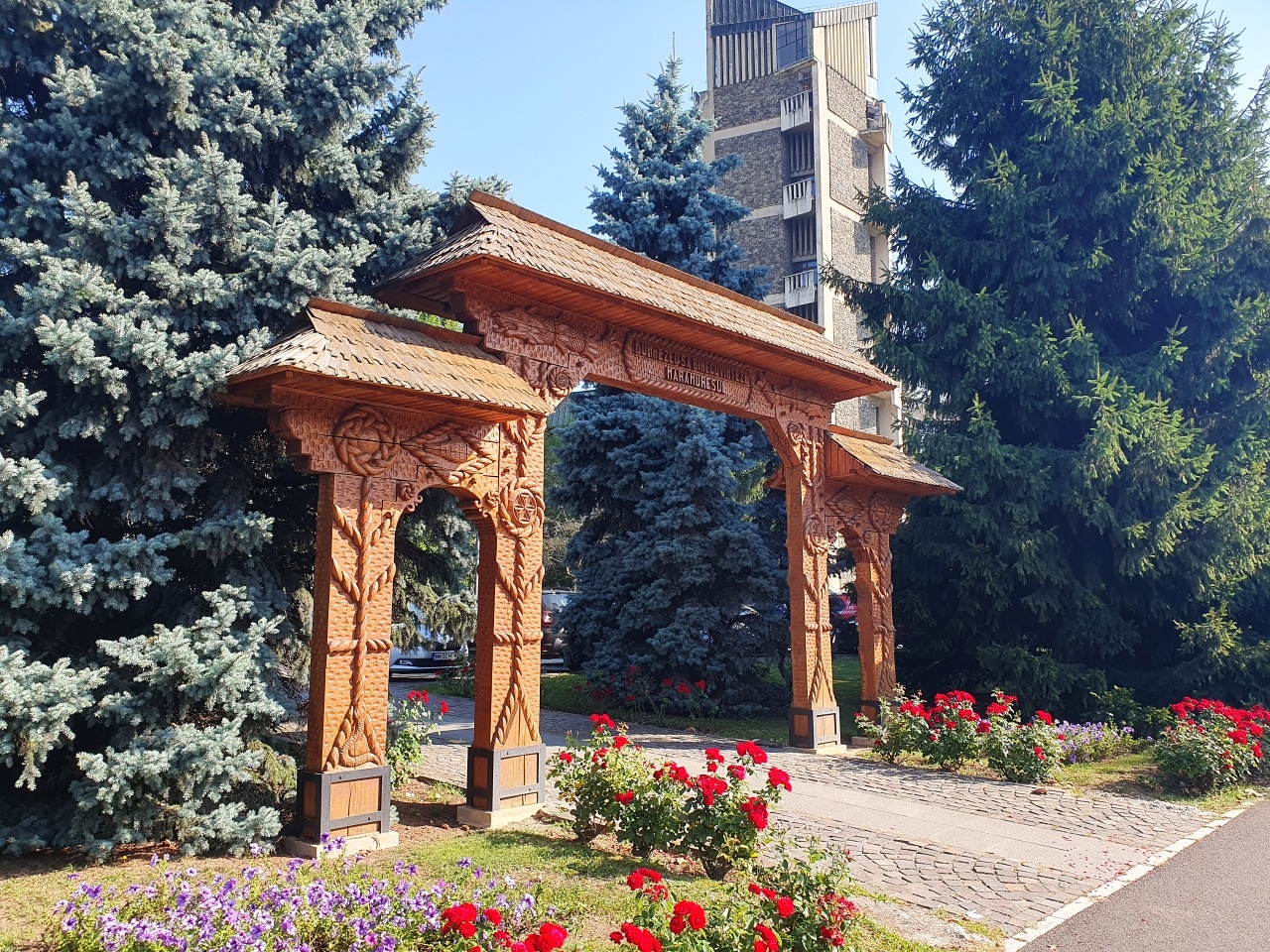
Next to the Prefecture is a wooden Maramures gate, one of the symbols of the Maramures culture in the area. Similar gates are frequently found at the entrance of each garden in the northern part of the county and everyone in Romania associates these gates with Maramures. On the upper part of the gate is a Draco (dragon), symbol of the ancient Geto-Dacian people who lived before the Romanian people in this land and, together with the Romans, gave birth to the Romanian people. A Draco is both savage and protective.
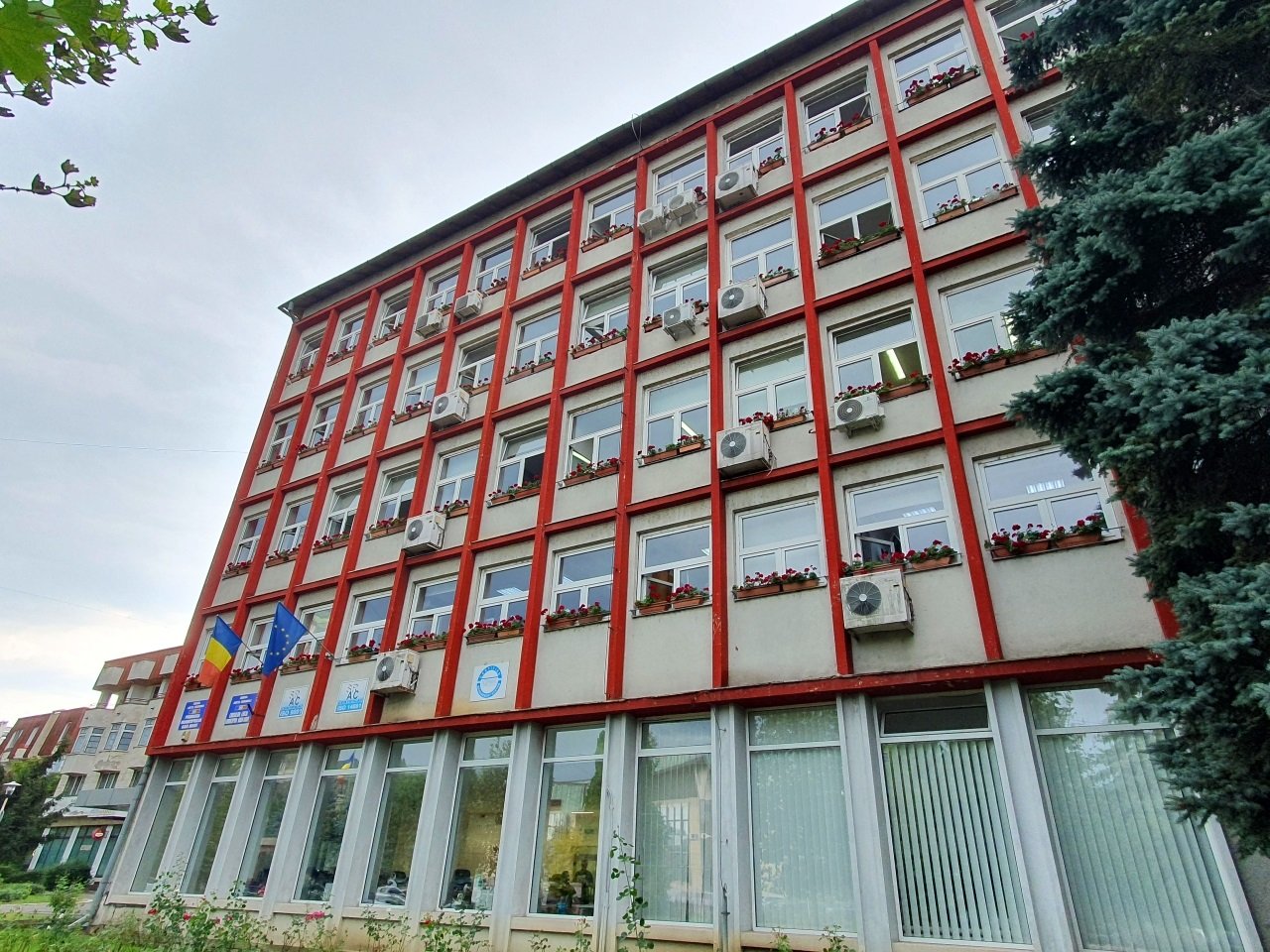
Opposite the Prefecture is the Town Hall of Baia Mare. The architecture is unimpressive, just a communist building used by questionable people. From one perspective, they couldn’t deserve more, given the state of the city you’re going to see below. The Town Hall has simply no style…
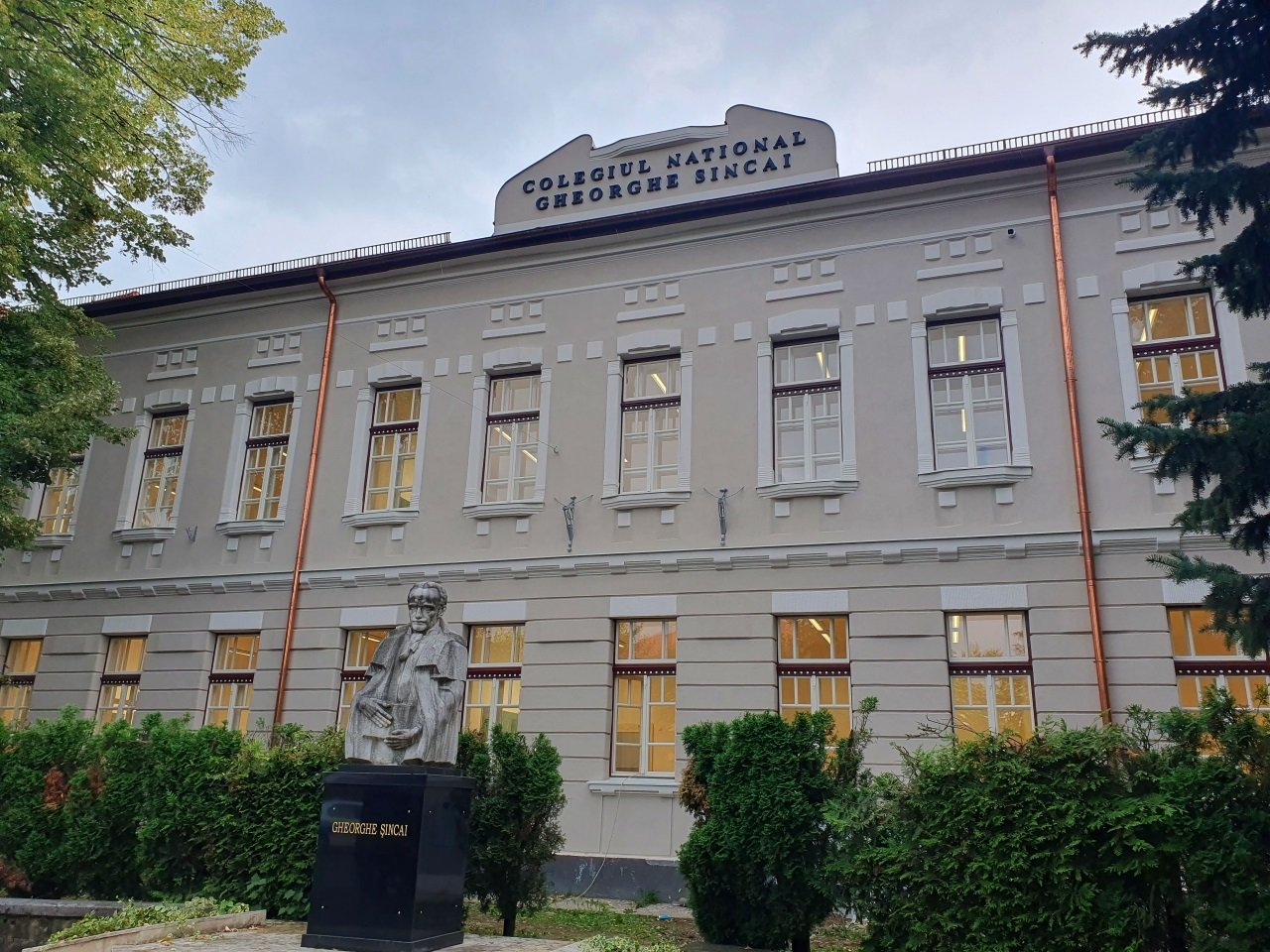
This is the Gheorghe Șincai National College, the best college in town and one of the best in the country. It is the Former Hungarian Royal State Elementary School.
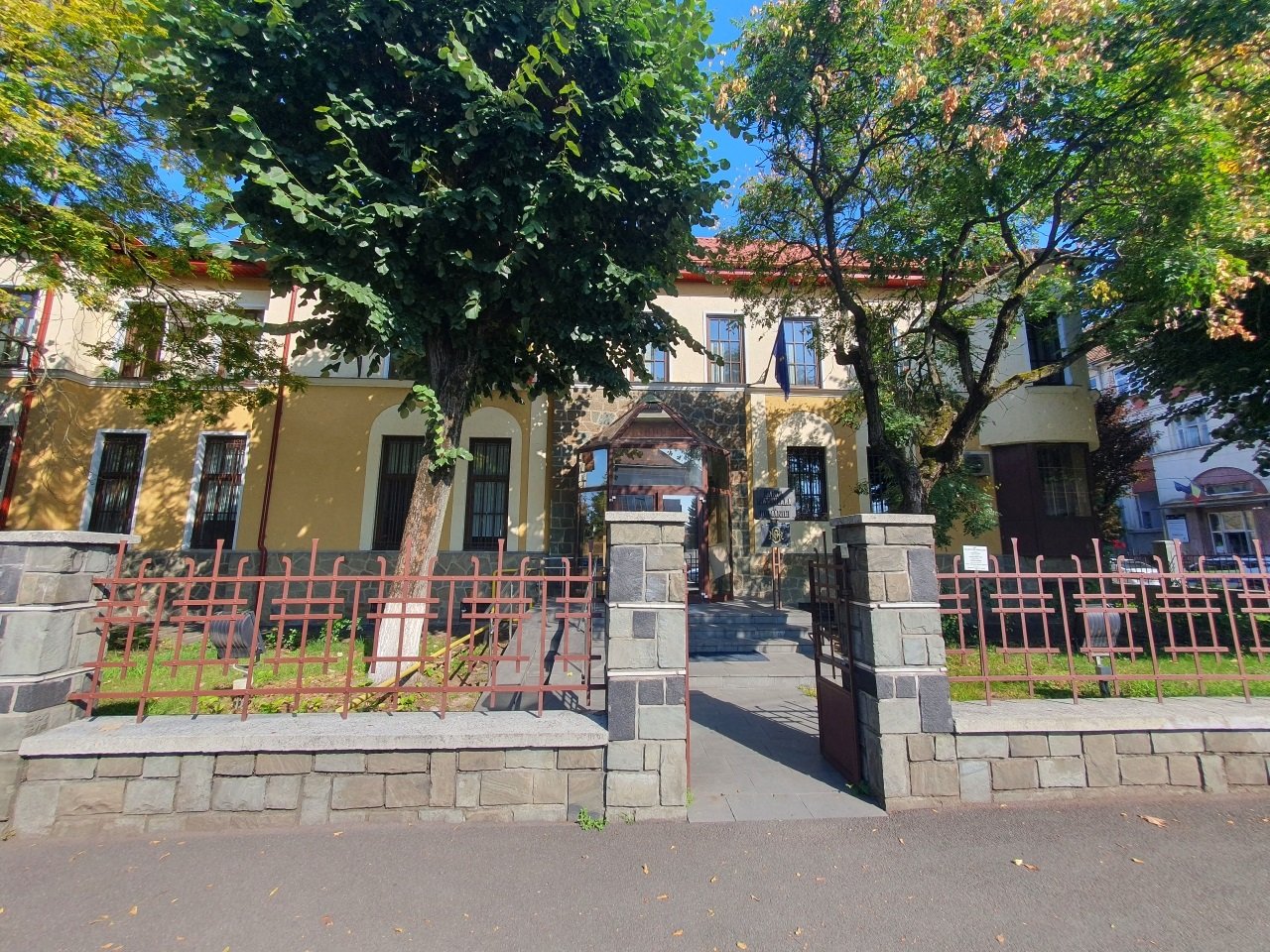
Opposite it is the National Bank of Romania and, to the right side of the image you can see one of the entrances of the Police Department of Baia Mare. The police in Baia Mare is renowned for being savage and absurd compared to other parts of Romania; given the profile of the area, I don’t know… Anyway…
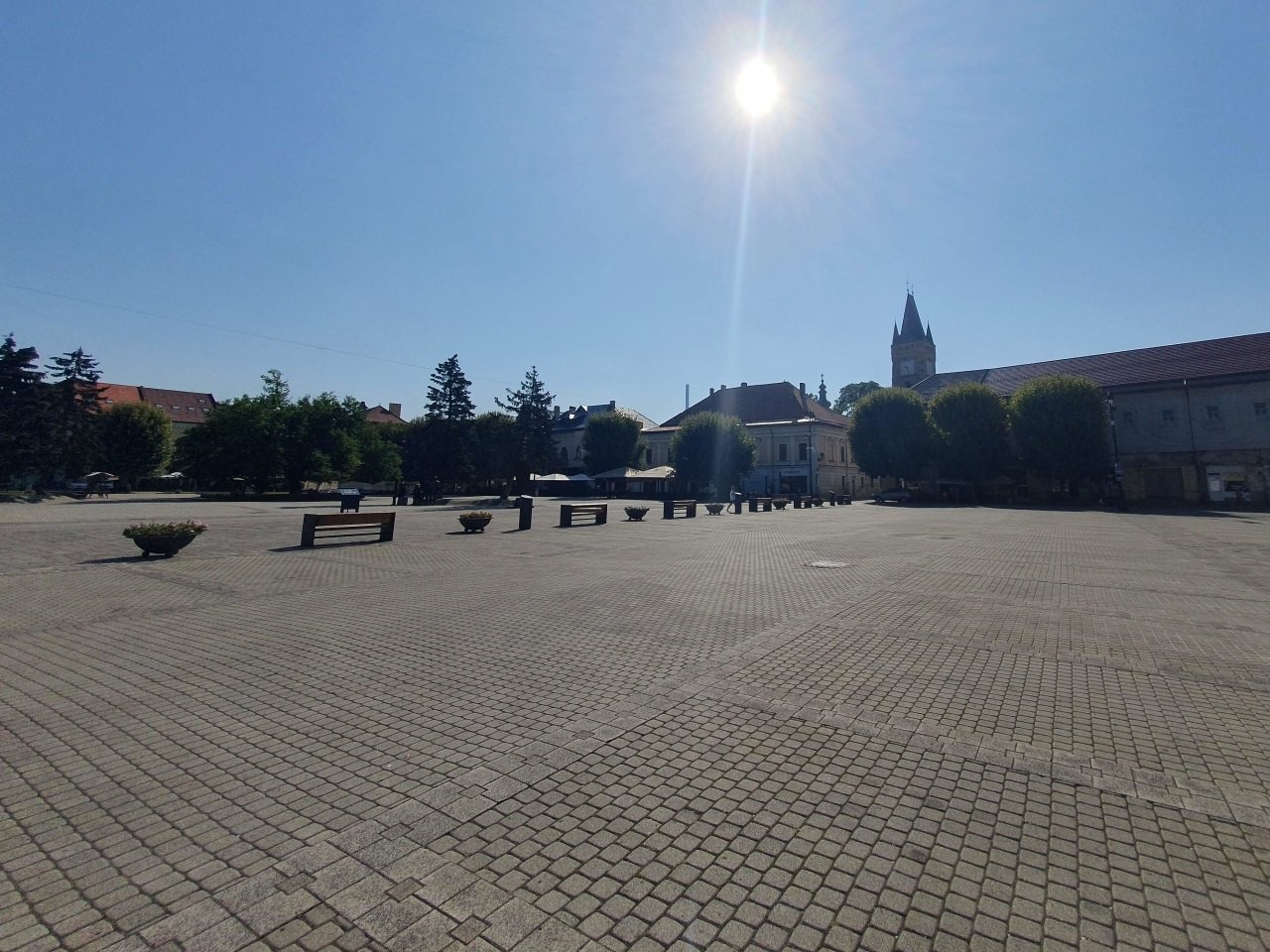
This is the Millennium Place (or the Freedom square) of the Old Centre. It has an eerie feeling when empty. In the background it’s Saint Stephen Tower, the symbol of the city.

Of course, things can change in an instant when it’s stormy. Here is a view from the former King Saint Stephen Hotel, now in utter ruin, where I took shelter from the rain.
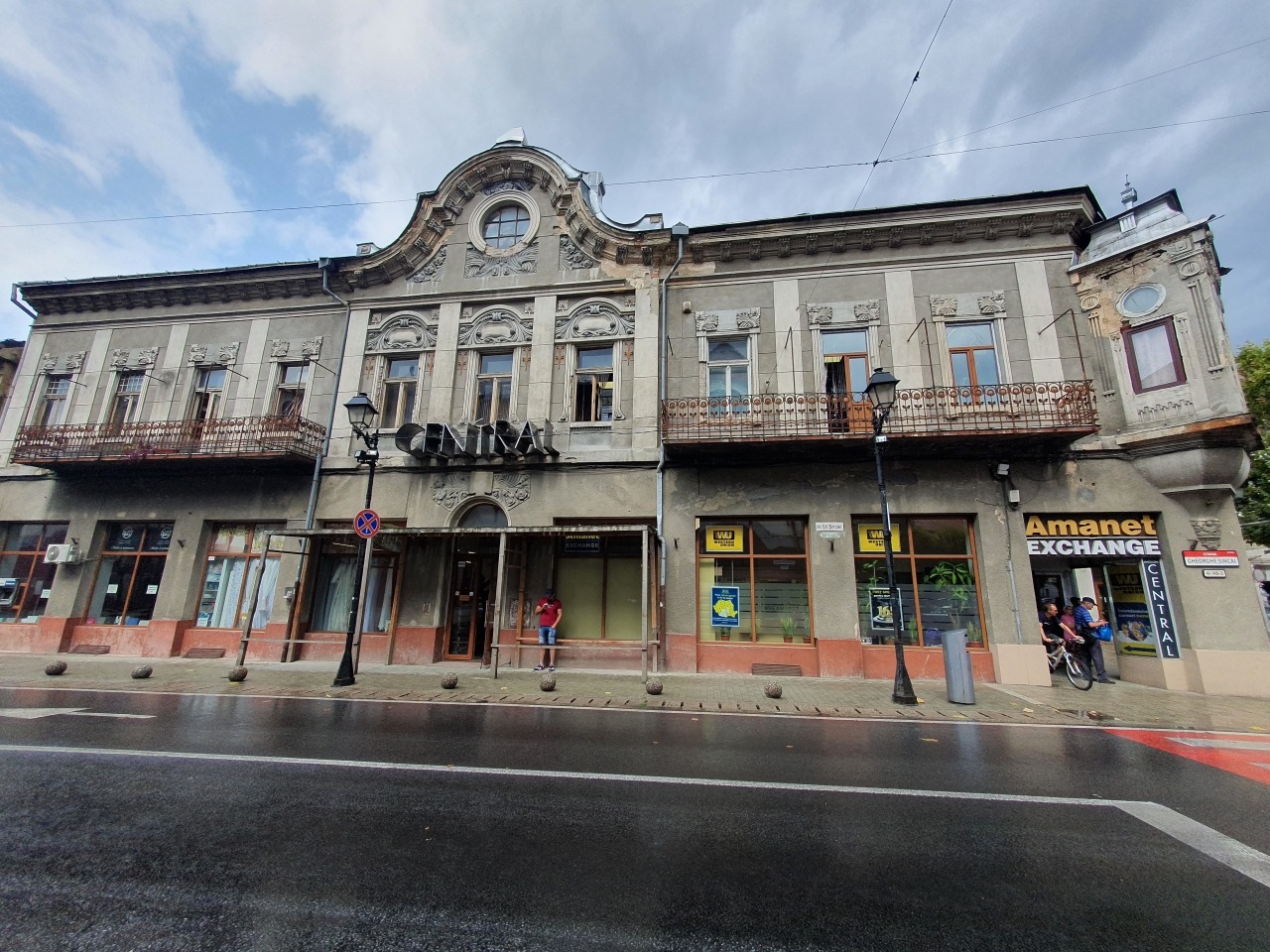
This is the Central Store… or the ruin of what used to be the main store in the city in ancient times. I like its architecture and its creepy feeling.

And here is the building where I took shelter, after the rain has stopped. It’s the King Saint Stephen Hotel, built in the Art Nouveau style in 1910. It was frequented by the artists of the Baia Mare School of Painting in the past, then it was used for parties, then it ended in private hands who have ruined it completely… To the right you can see the Central store.
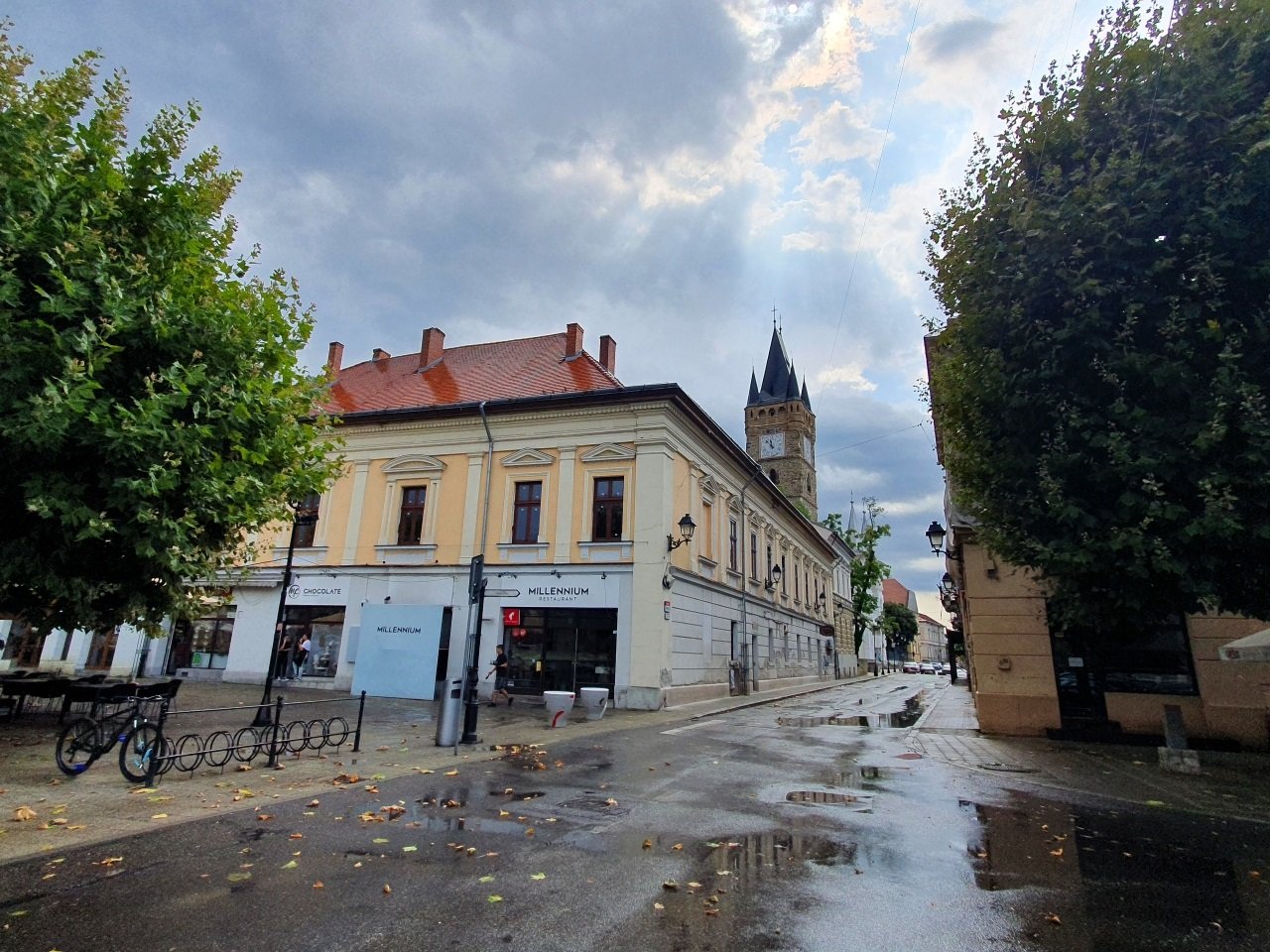
The Dégenfeld Palace in the Millennium place.
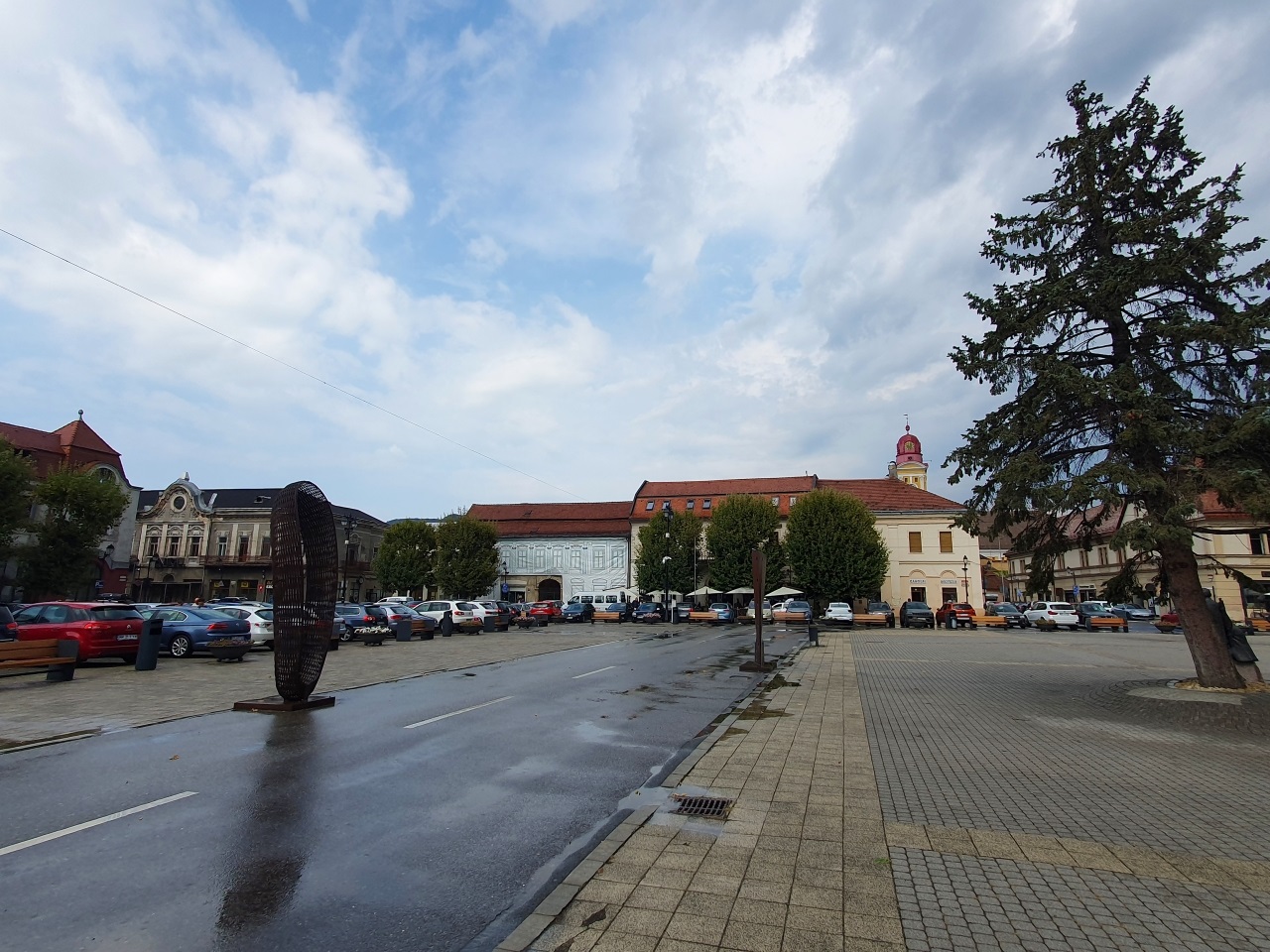
And the view towards the north, with the Teleki House in the middle and the Central to the left.
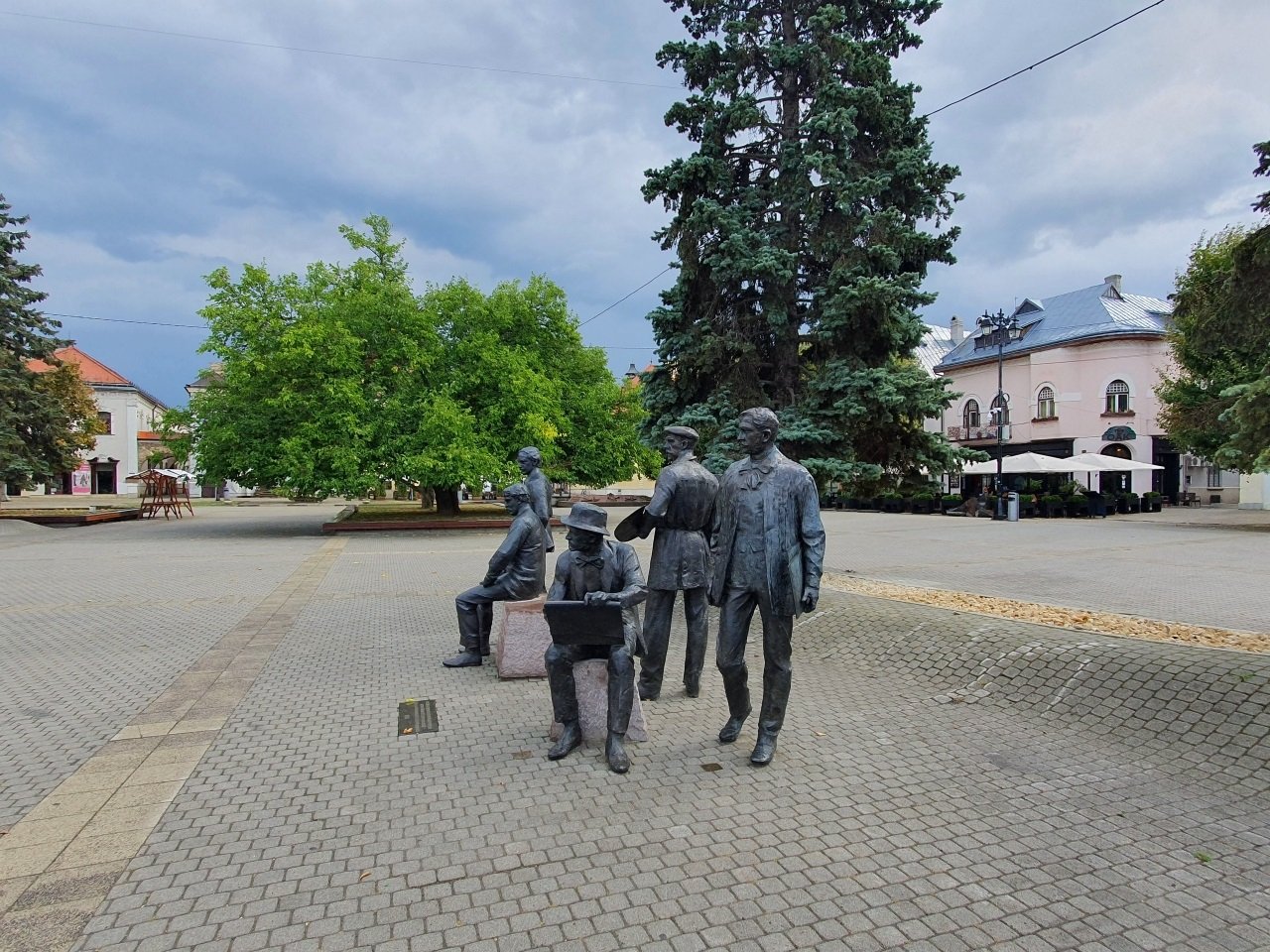
A very recent statue group of the painters belonging to the Baia Mare School of Painting. Nobody knows them in Romania but they are pretty well-known abroad. Ironically… To the left and in the background is the Vida Géza Museum, also unknown to the Romanians of today. To the right is Schola Rivulina.

Another view towards the north, with the reformed church in the center.
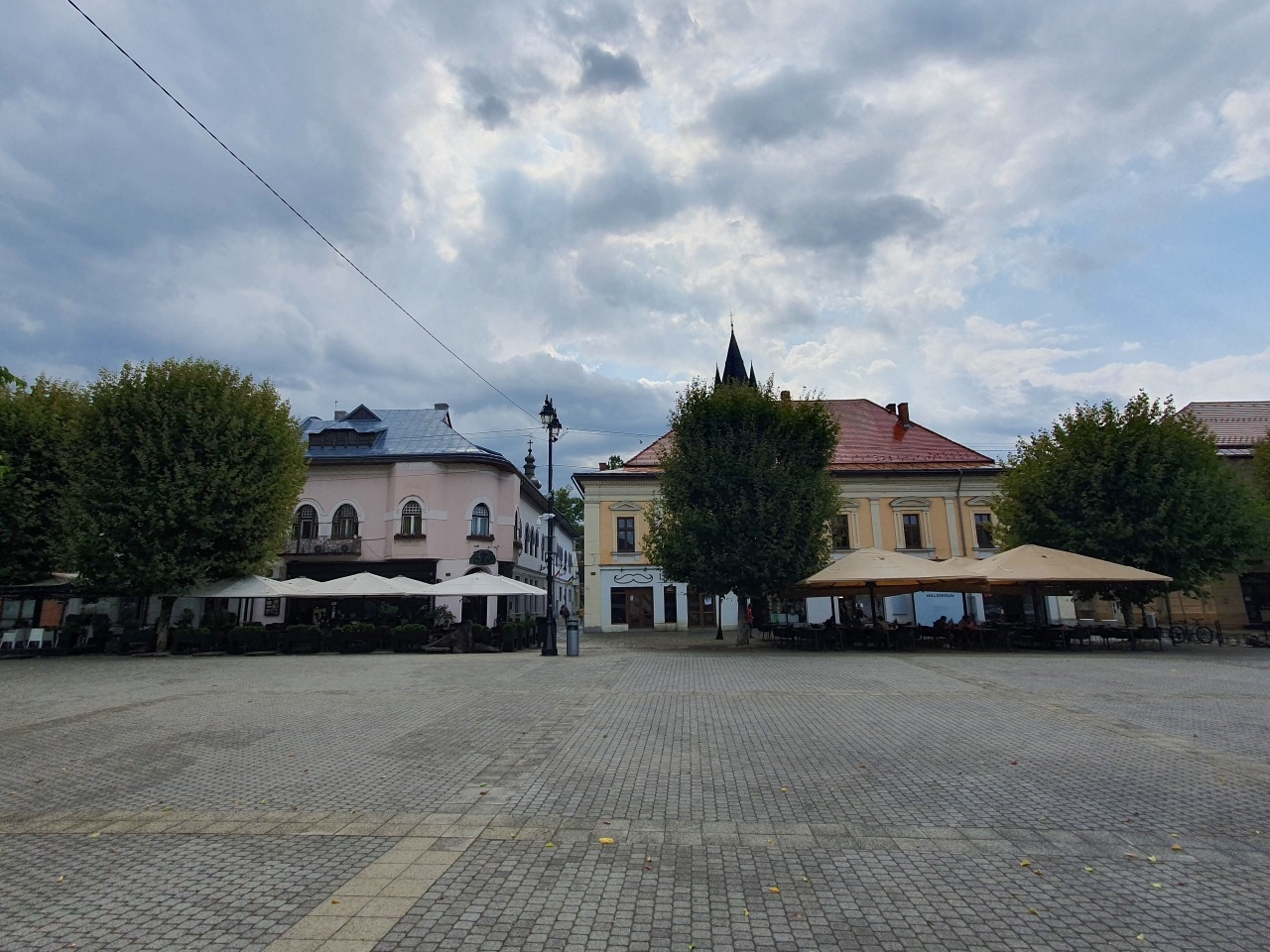
Looking south now, with the Dégenfeld Palace to the right and Schola Rivulina to the left.
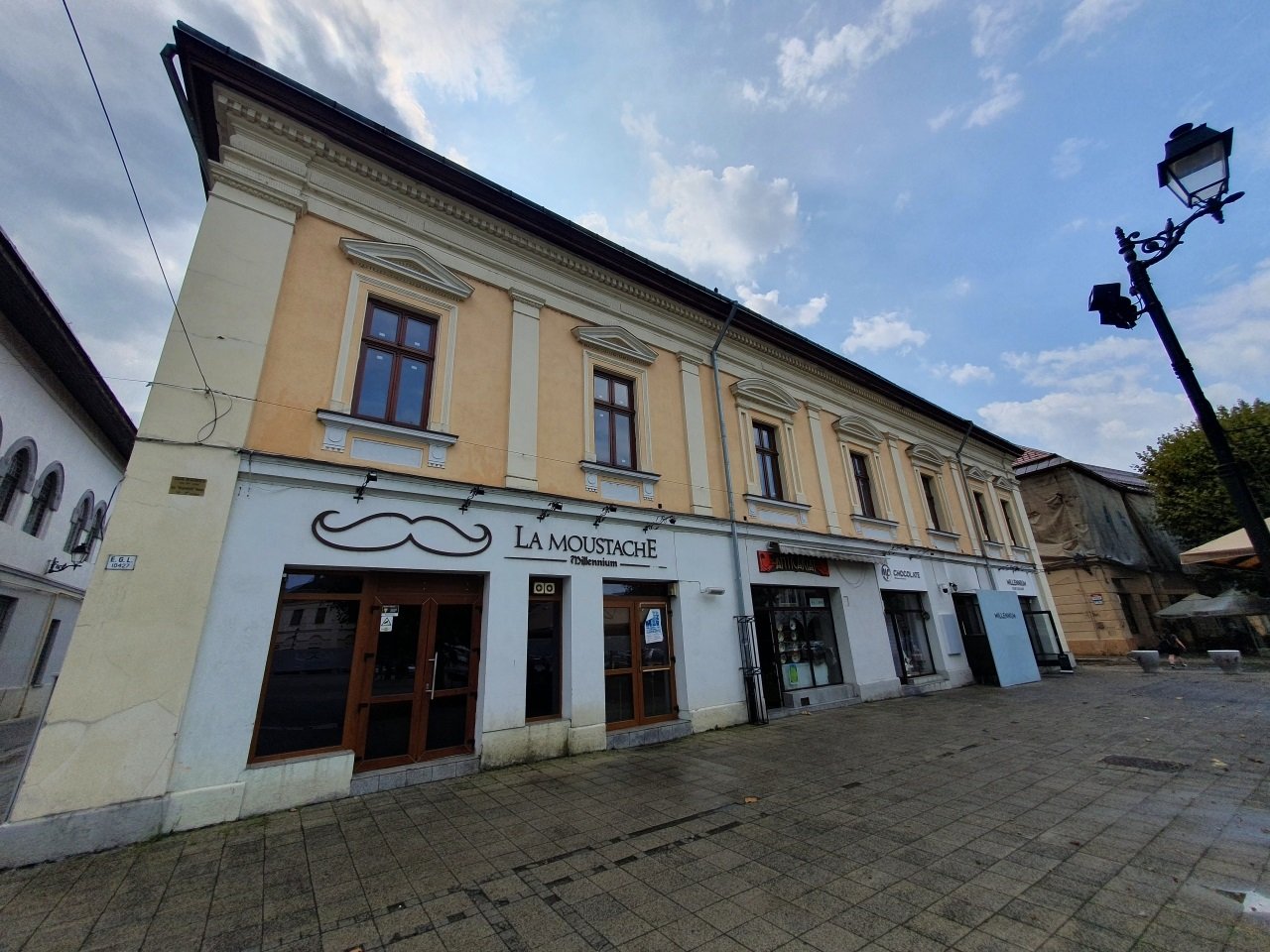
A detail of Dégenfeld Palace.

And a detail of Schola Rivulina. In 1547 the reformer Kopácsi István converted Baia Mare to Protestantism and founded the Lutheran college, the first secondary school in Transylvania (yes, you read it well!). He named it Schola Rivulina after Rivulus Dominarum, Baia Mare’s Latin name. Almost nobody knows this today…
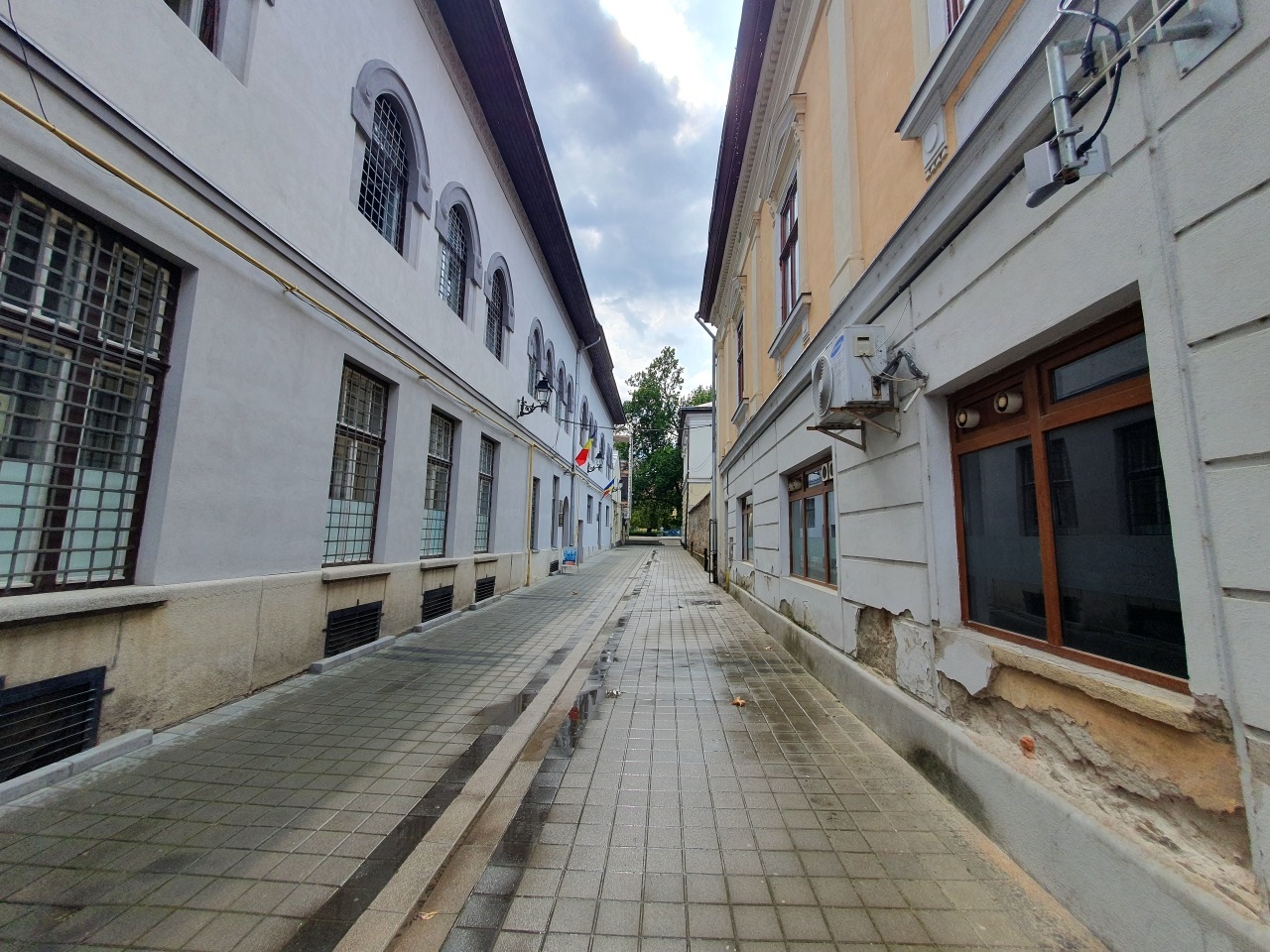
Walking between the 2 buildings towards the Fortress Place (Piaţa Cetăţii) and St. Stephen’s Tower. Where you see the flag is the Military office. If you feel like the right side is in ruin… it’s because it truly is so…
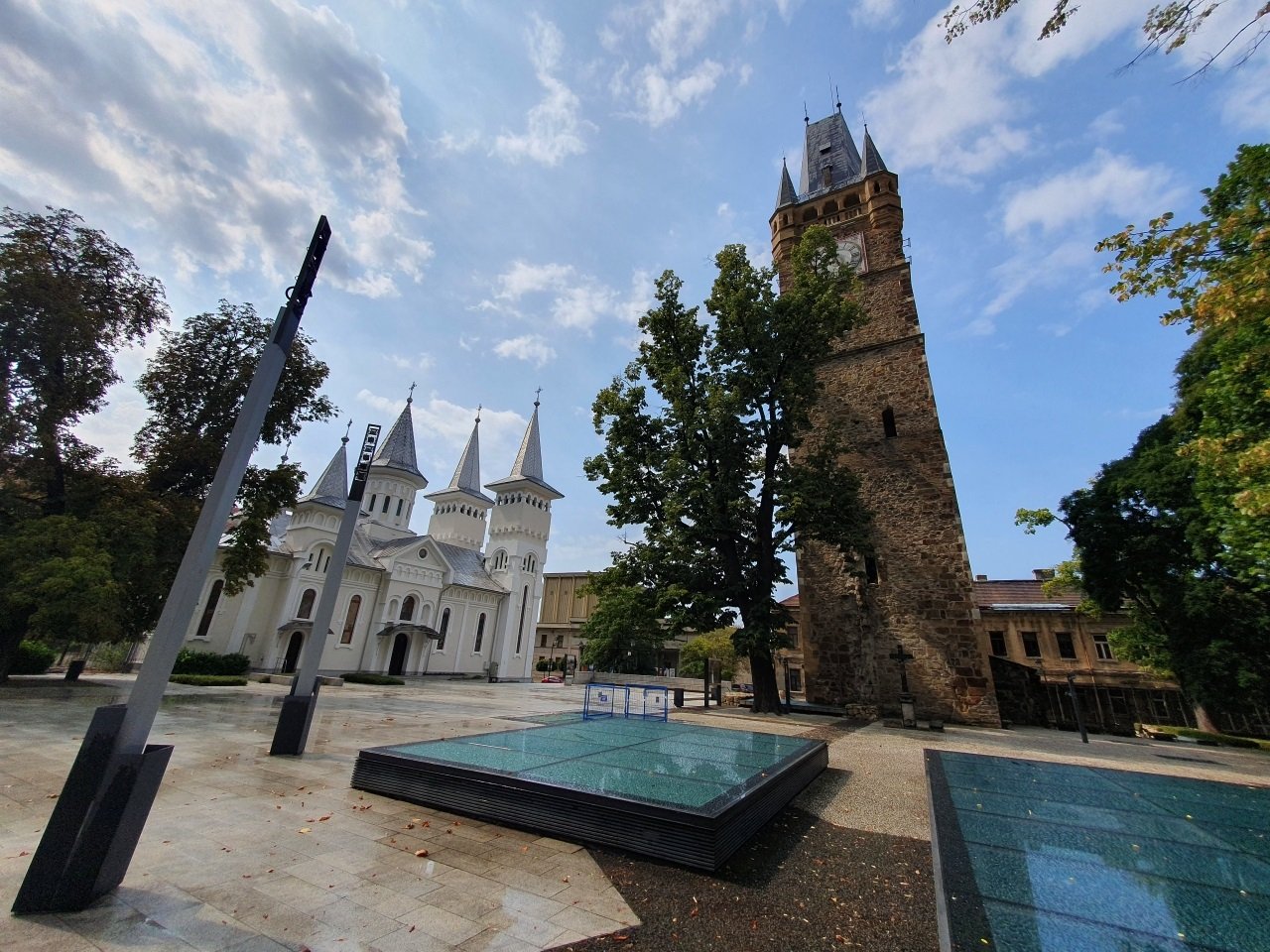
Classical view of the Fortress Place, with the Tower and the Orthodox Church St. Stefan to the left.

Another classical view of the Holy Trinity Roman Catholic Church, the main Catholic church in the city. The church was built in 1717 as a Jesuit Church and Monastery, and has a complicated history. It is built in the Baroque style and is my favorite place in Baia Mare.
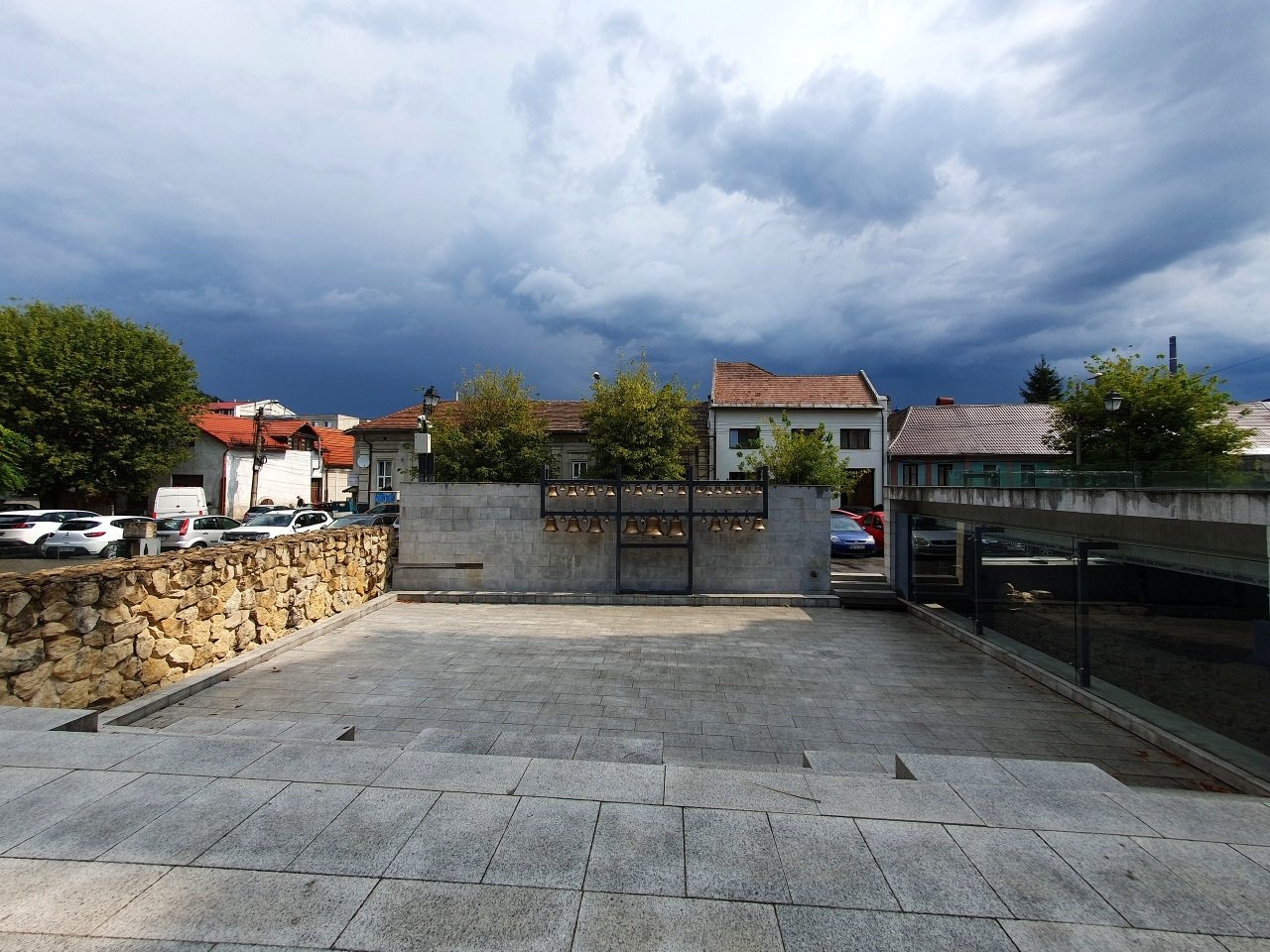
In what is now the Fortress Place, used to be a big church, St. Martin Church. St. Stephan’s Tower is the only visible part left… and some stone walls visible here. There is a partly-underground museum showing the walls of the ancient church. And in the center of the image you can see a carillon.
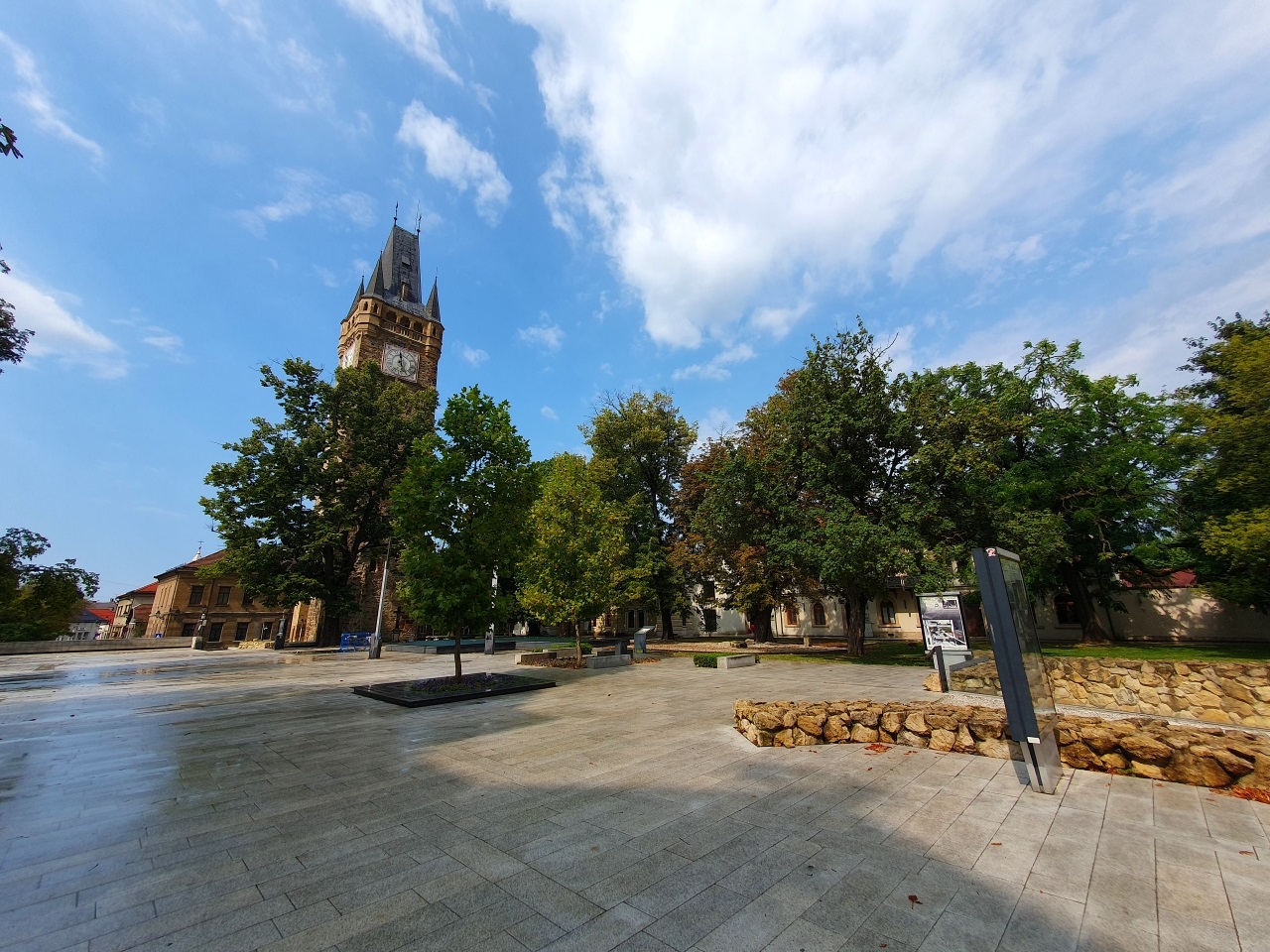
Just imagine all this space filled by a big church… The church was built in 1347 and lasted until 1847…

The Museum of Fine Arts, former County Salt Office, built in 1748 and transformed in museum in 1954.

Not the nicest façade for a “fine arts” museum though…
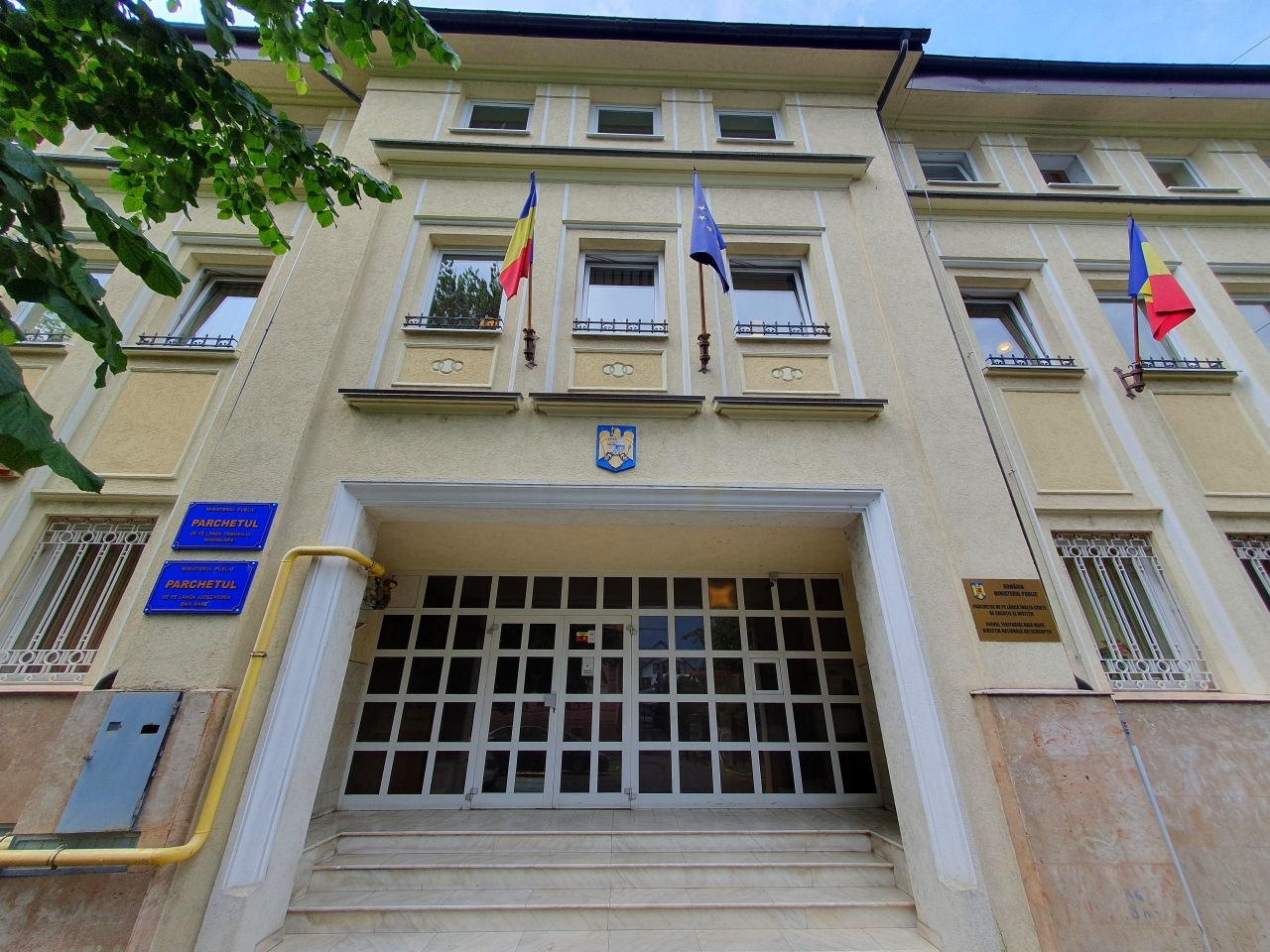
The Court Prosecutor’s Office, next to the museum. Communist in heart and soul…
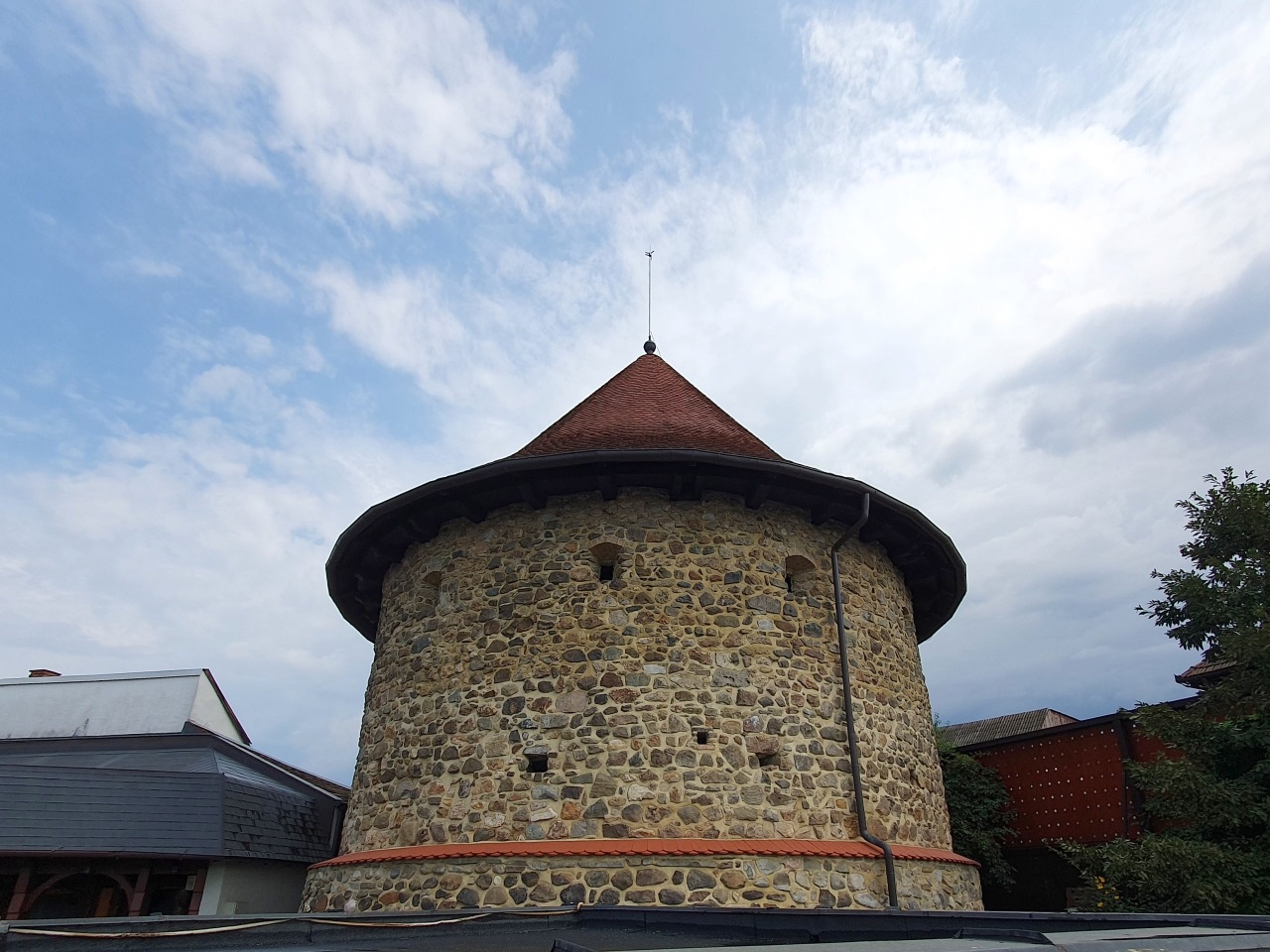
The Butcher’s Bastion (Bastionul Măcelarilor), built in the 16th century, was a bastion protecting the southern gate of the medieval town. It is nowadays a museum. Near it, where the present main market of the city functions, Pintea the Brave (Pintea Viteazul), the famous local rebel (haiduc), was killed in 1703.
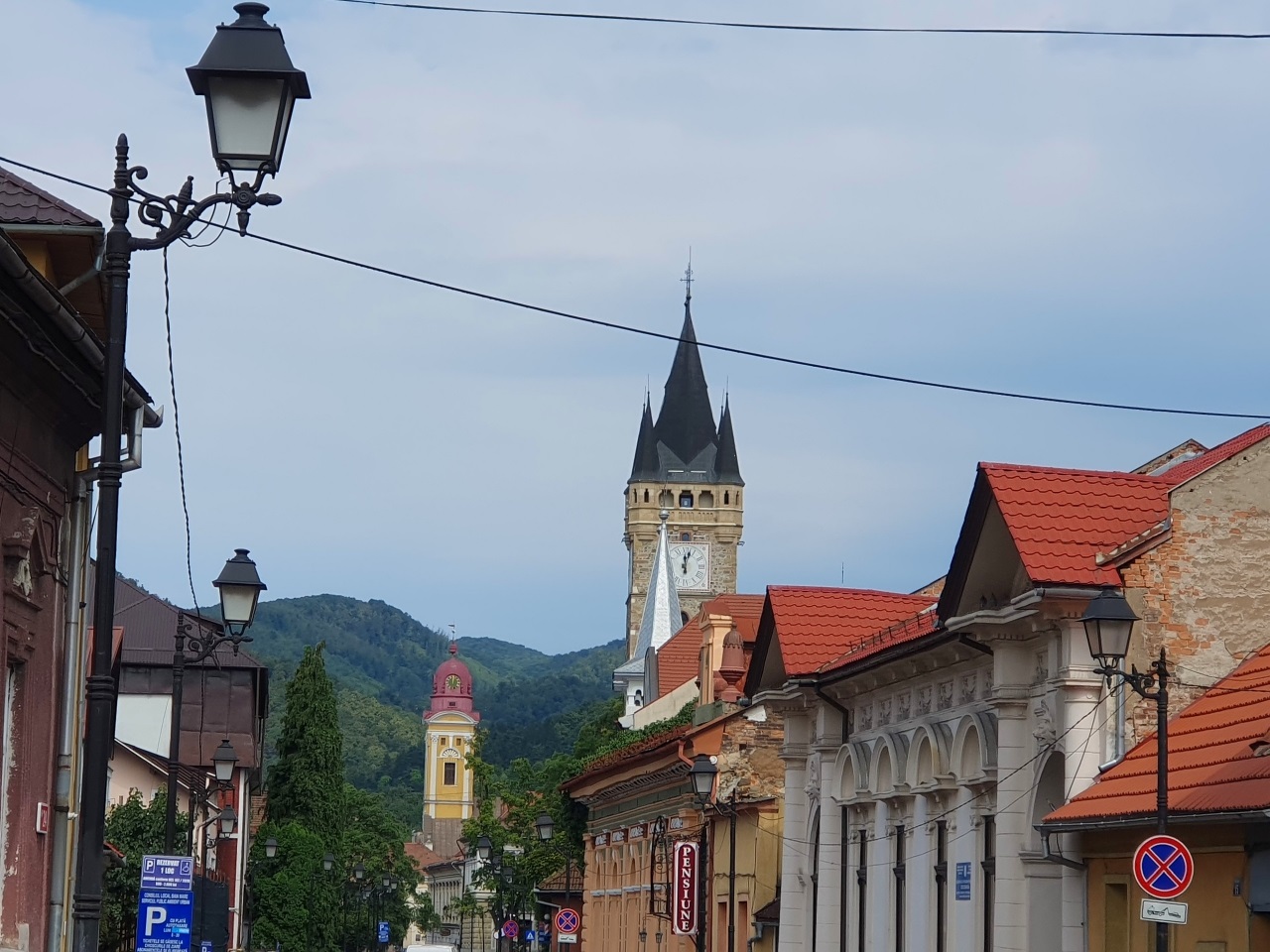
One of the most beautiful and romantic views of Baia Mare.
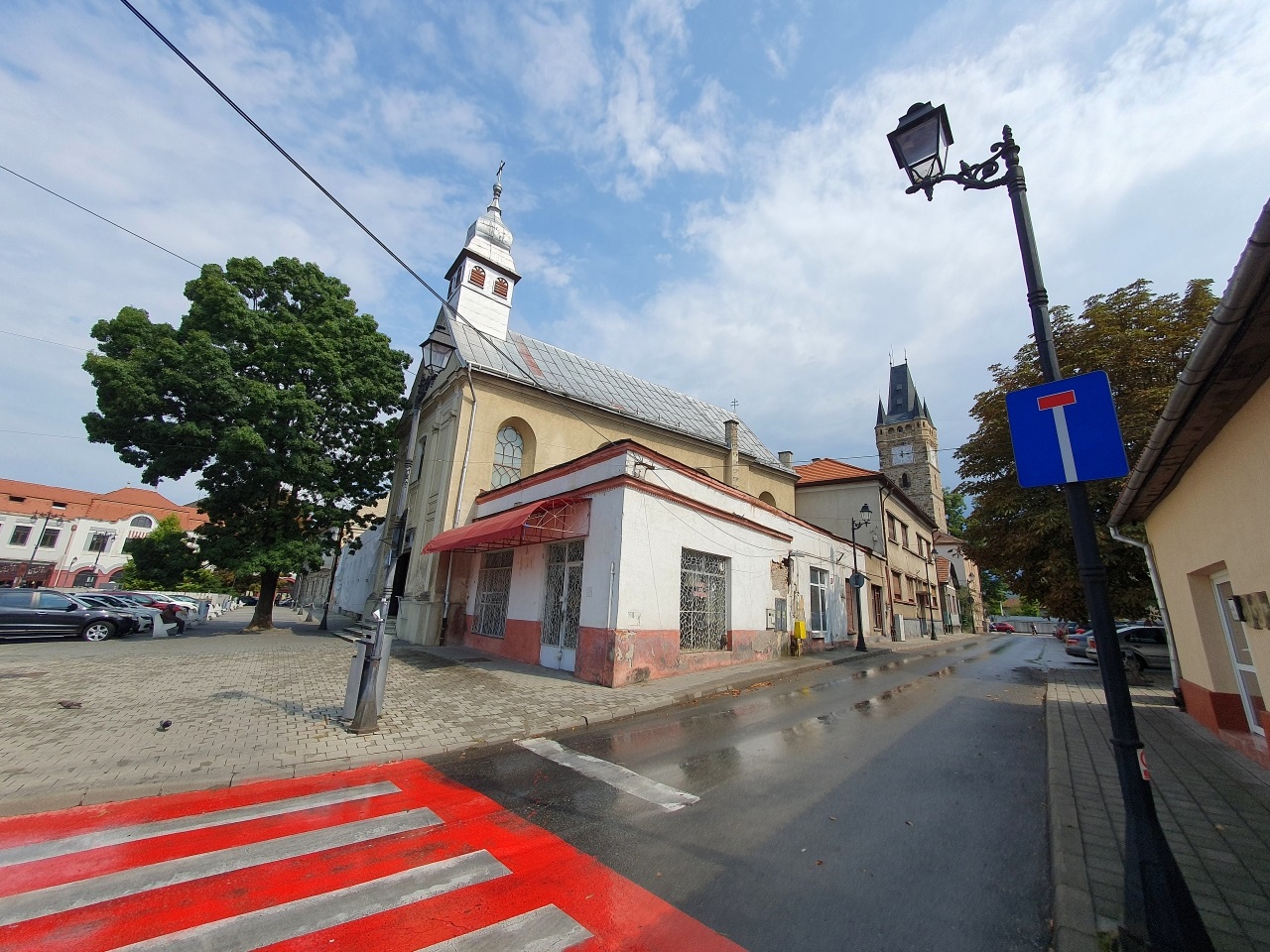
The St. Nicholas Roman Catholic Church, the oldest church in Baia Mare, built in the 15th century. Also known as the Small Market Church or the Franciscan Church. In 1547 and again in 1703, it was taken over by the Calvinists, but eventually remained Catholic.
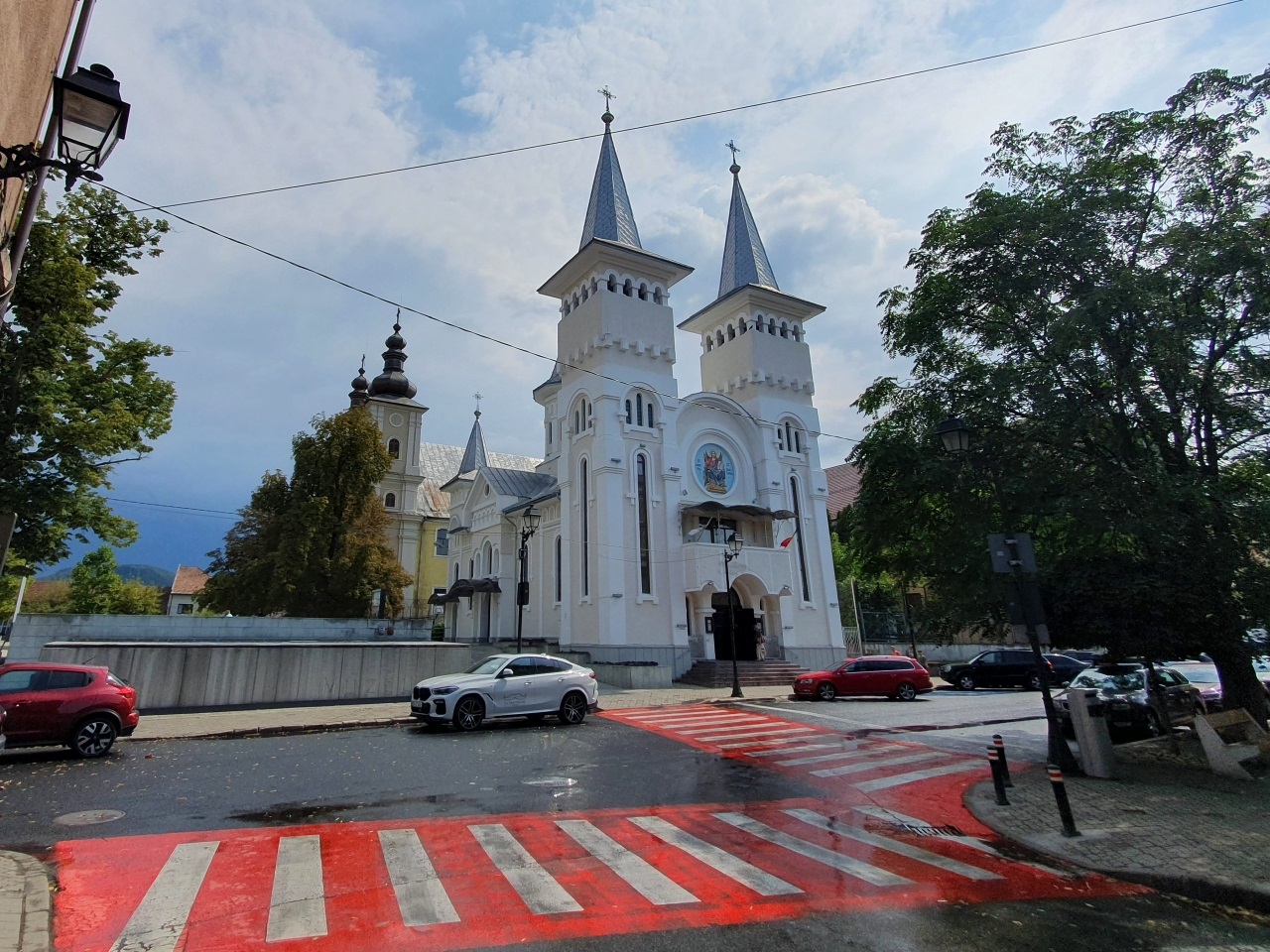
View of St. Nicholas Orthodox Church, built in 1922. In the background is the Holy Trinity Catholic church.
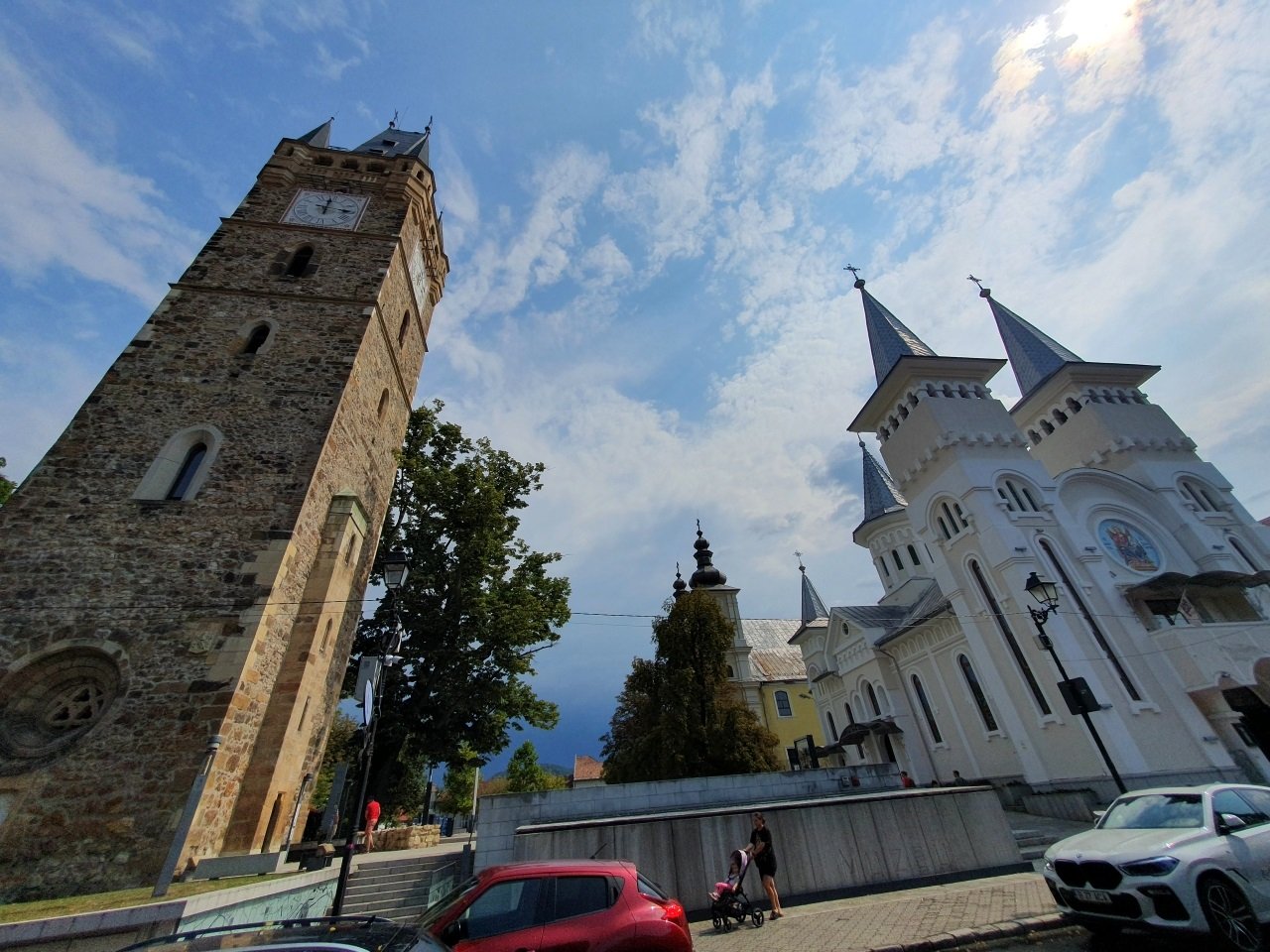
The 3 churches facing each other.

The Baia Mare Theater (Teatrul Municipal).
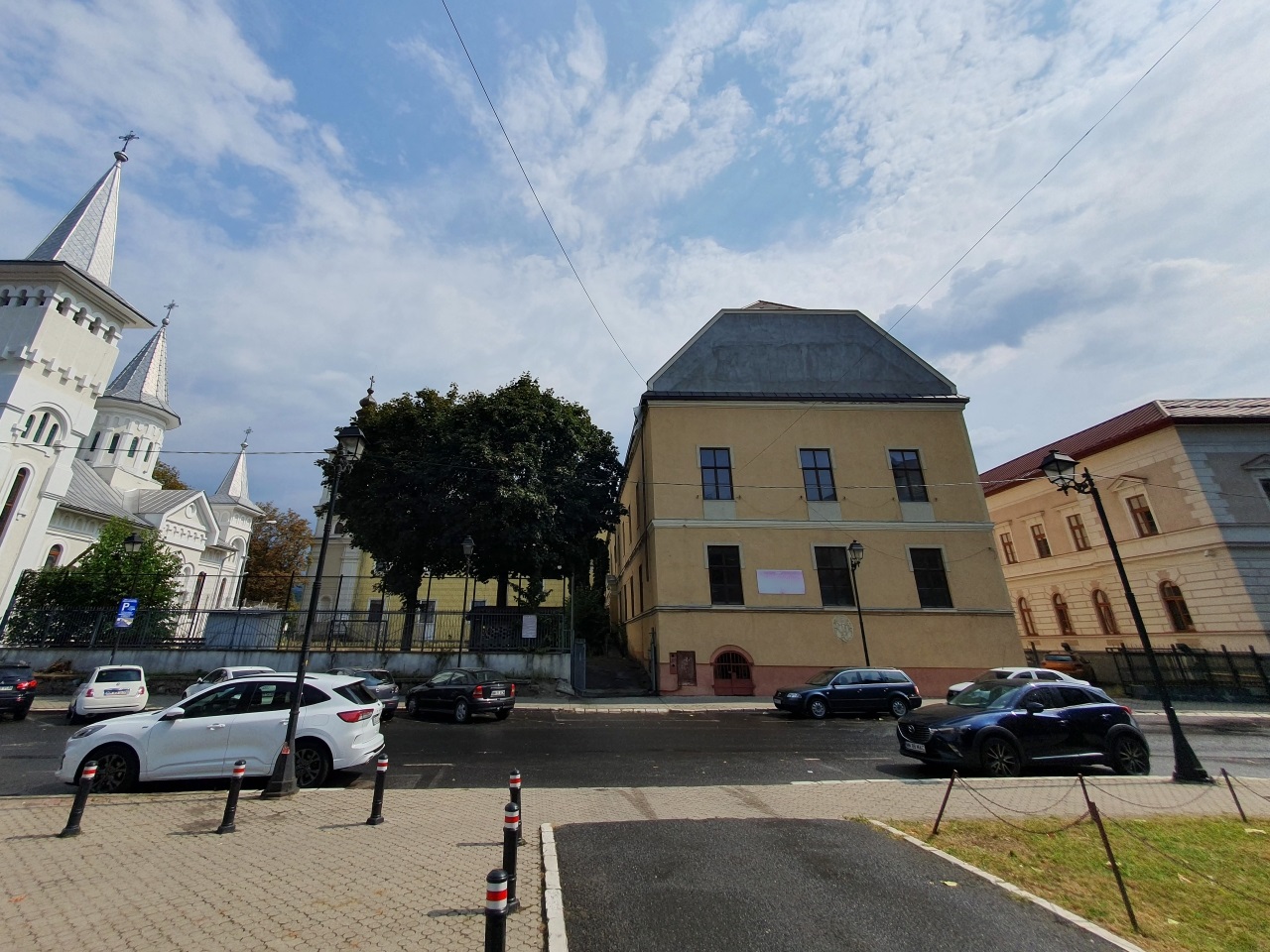
Petre Dulfu Middle School, the former Hungarian State Grammar School, in the center. To the left is the Court of Baia Mare, the former Hungarian Royal District Court. Because history does not forgive…
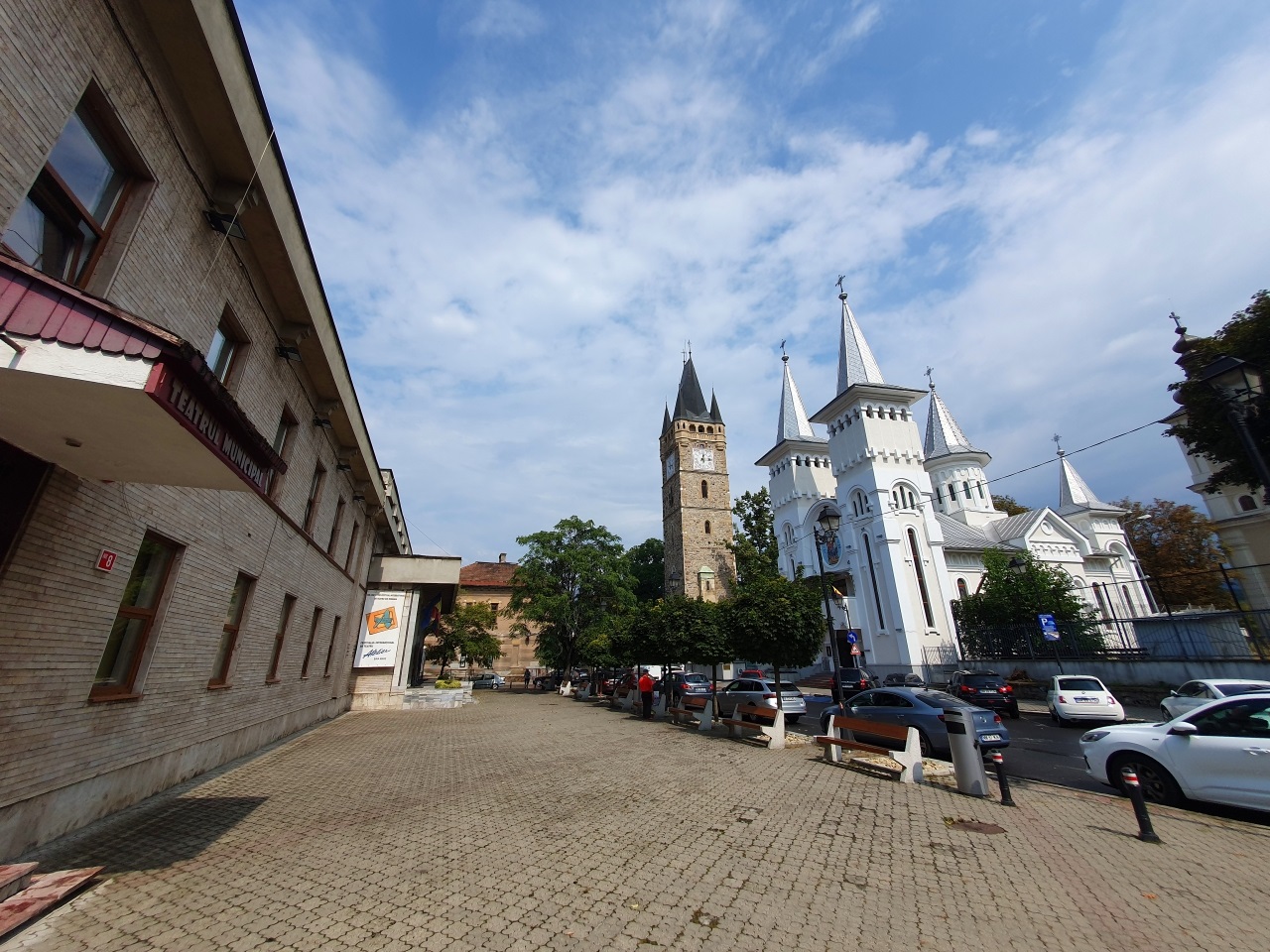
Another view of the area, from the theater.

Perspective of St. Stephen’s Tower. While looking at its history, it was part of both a St. Stephen’s Church and a St. Martin’s Church, was taken over by the Lutherans, then by the Calvinists, then was returned to Catholics (first the Franciscans, then the Jesuits). The church was eventually struck by lightning and completely destroyed. Since 1445 when it was built, this tower has seen a lot…
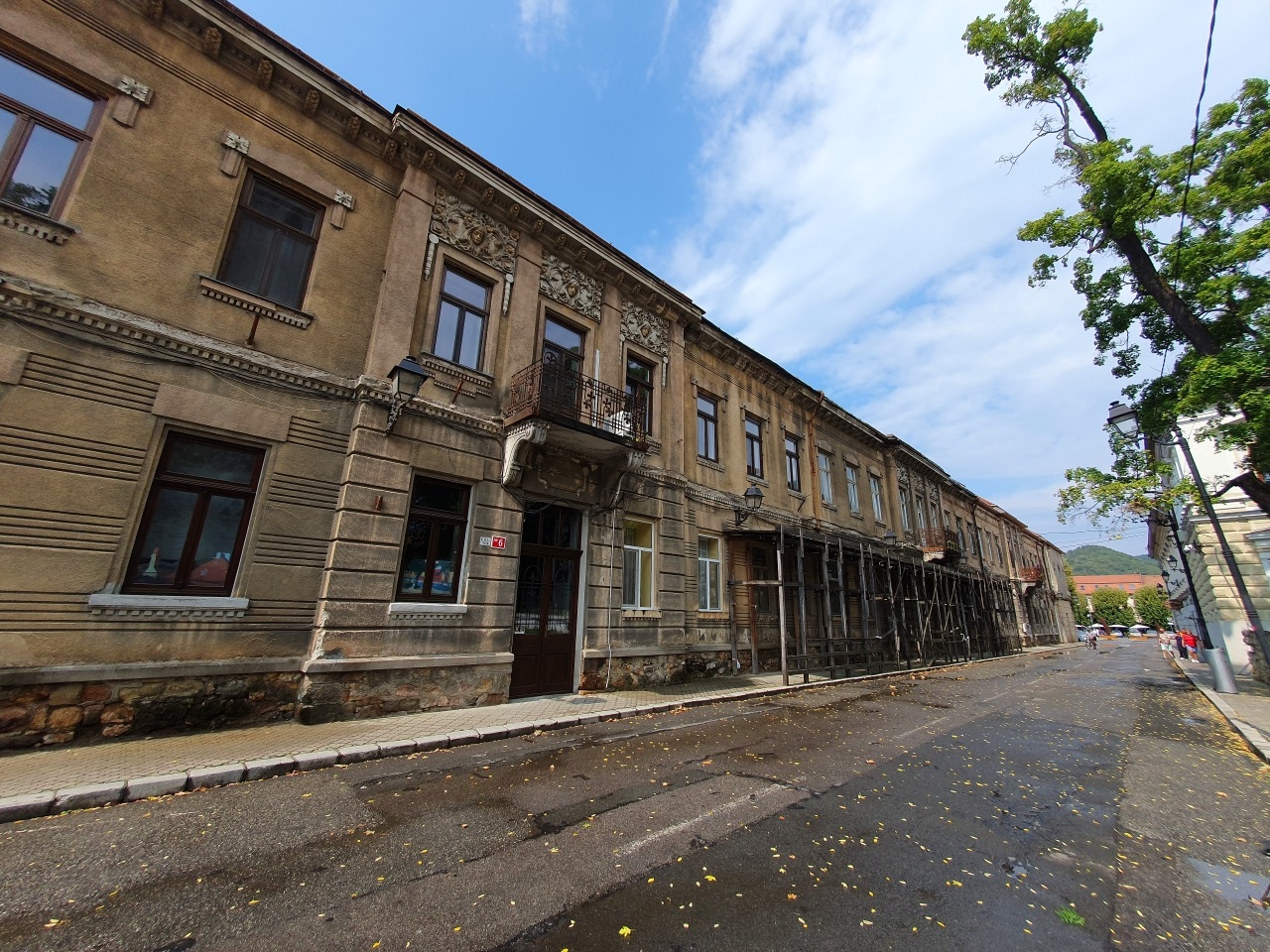
Opposite the Tower it’s the former Minorite Monastery, built in 1692 on the ground of a previous Minorite monastery built in 14th century and destroyed in 1547 by the Reformation. In 1948 the monks were expelled by the communists and – believe it or not – today this building is the headquarters of the… General Directorate of Public Finances Maramureş (Direcţia Generală a Finanţelor Publice or Fiscul)…
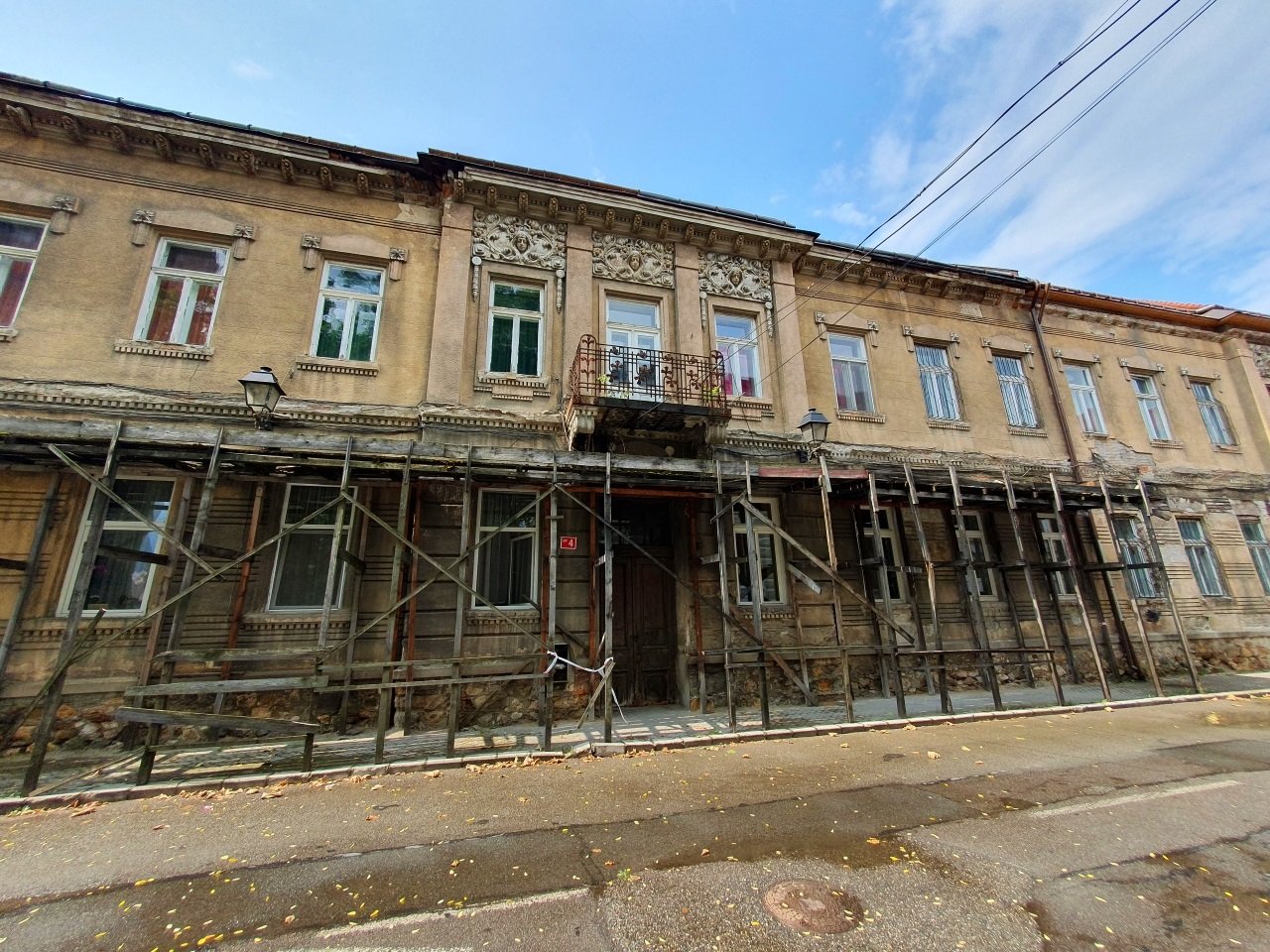
Just take a closer look! This is the building of the Public Finances in Baia Mare… Yep!…
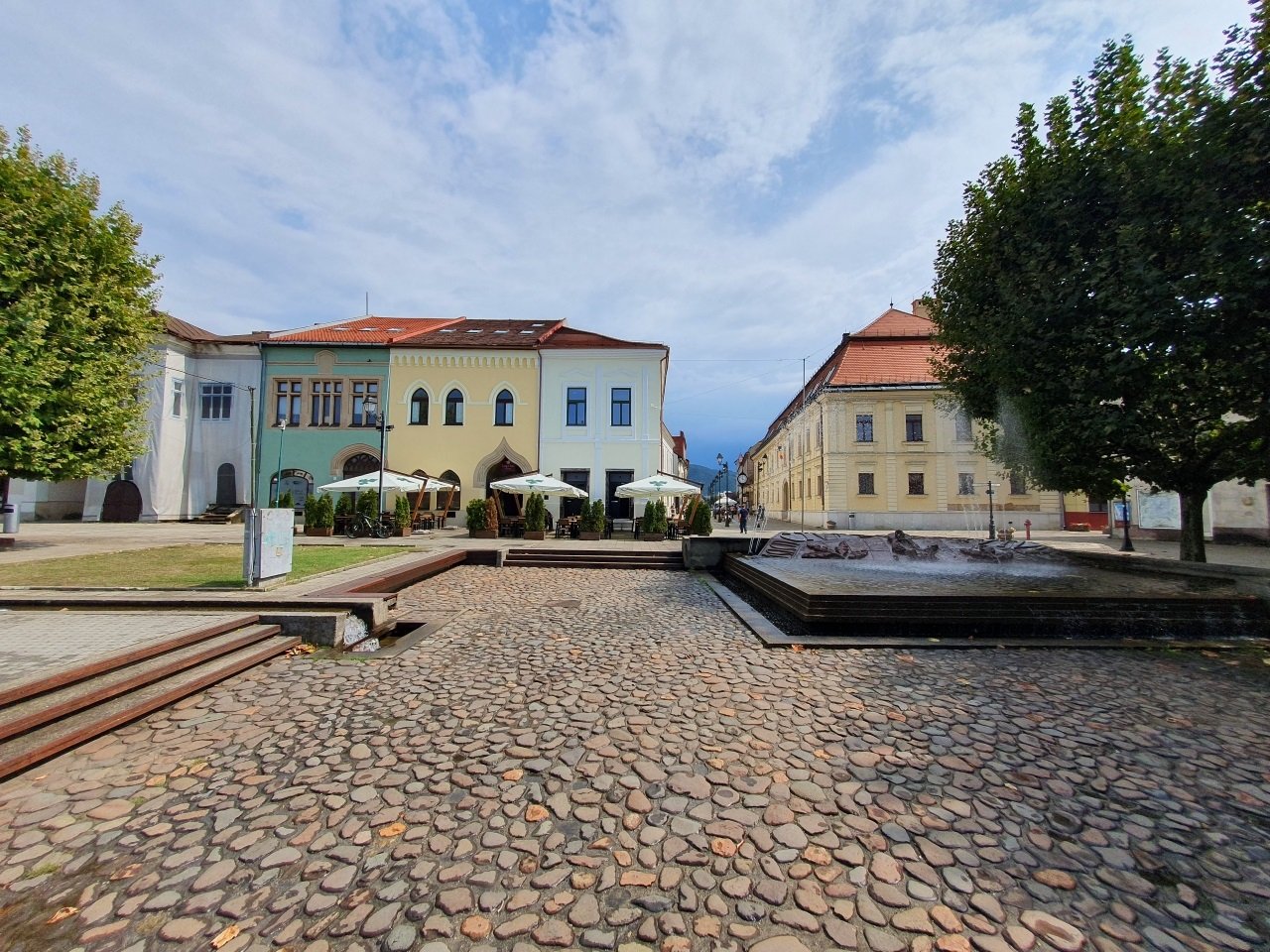
Back to Millennium Square, the eastern view, with the Black Eagle Inn to the right and Hunyadi House in the center-left. The Black Eagle Inn was built in 1736 and it was the Town Hall of Baia Mare between 1925 and the 1970s. The Hunyadi House was built in 1446, when Baia Mare belonged to John Hunyadi (Iancu de Hunedoara in Romanian, Regent-Governor of the Kingdom of Hungary and Voivode of Transylvania) who acquired the town in 1445. The house passed to John’s son, Matthias Corvinus (Matei Corvin in Romanian, King of Hungary, Croatia & Bohemia and Archduke of Austria) and remained the property of the Hungarian state until the end of the 19th century.
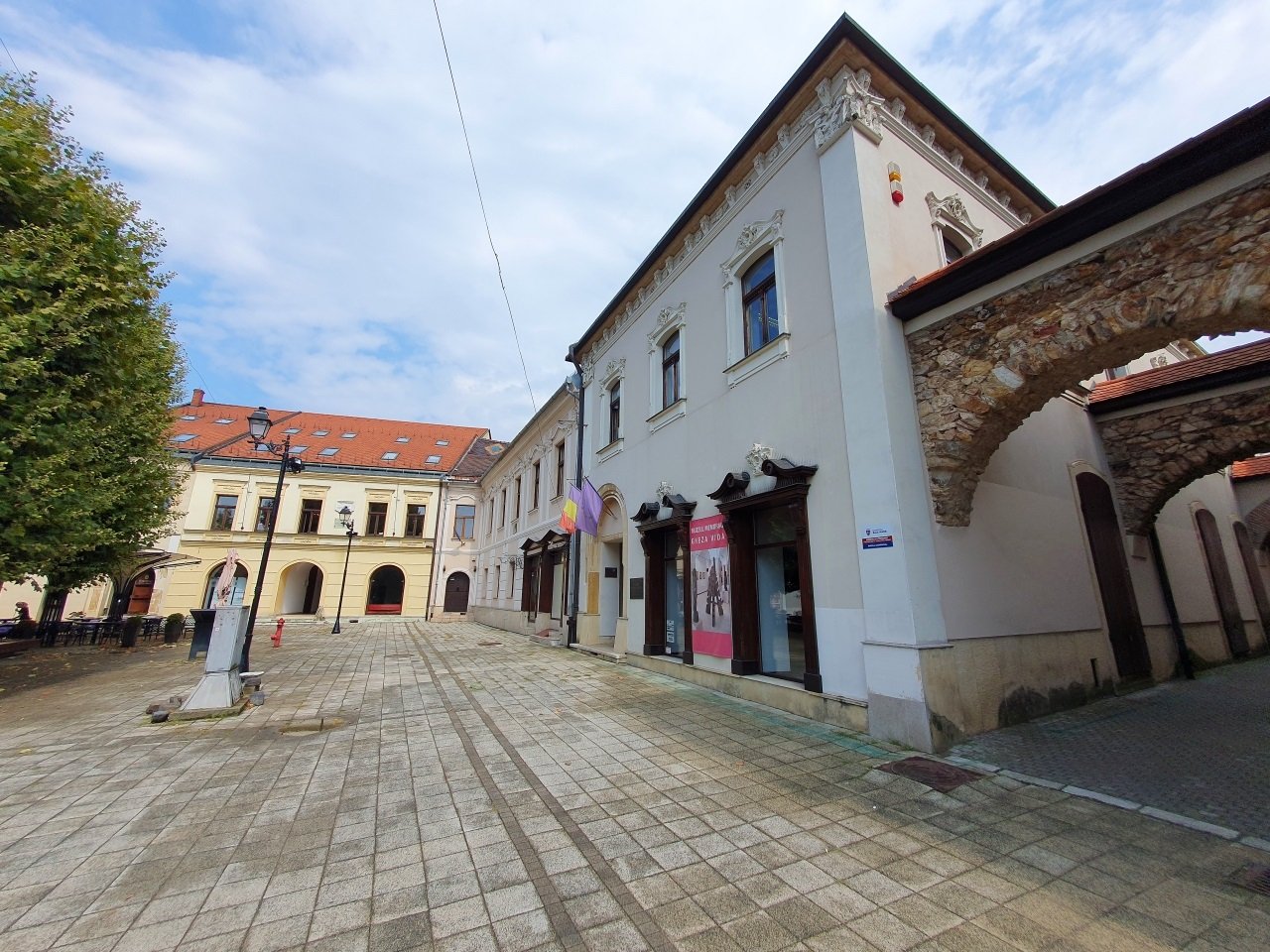
The Vida Géza Museum in the center of the image and the Lendvay House in the background (the yellow one). The actor, theatre director and singer Lendvay Márton Sr. (1807-1858) was born here.
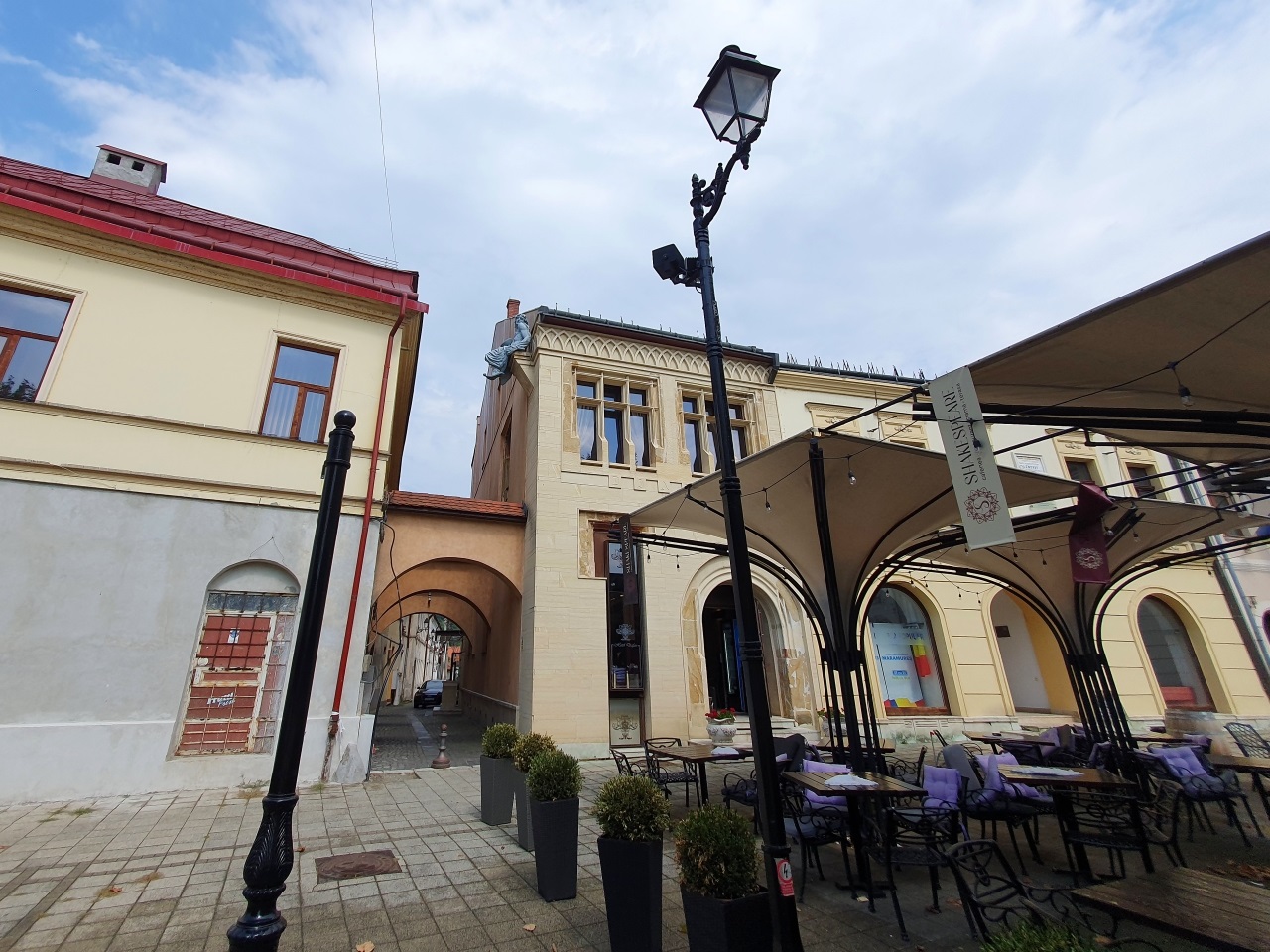
Lendvay House has the distinctive statue of a clown next to the roof (grey, above the arches).

The Museum of History and Archeology, former Coin Mint (Monetăria), built in 1904, on the place of older mint buildings. This museum is simply fascinating and very well organized.
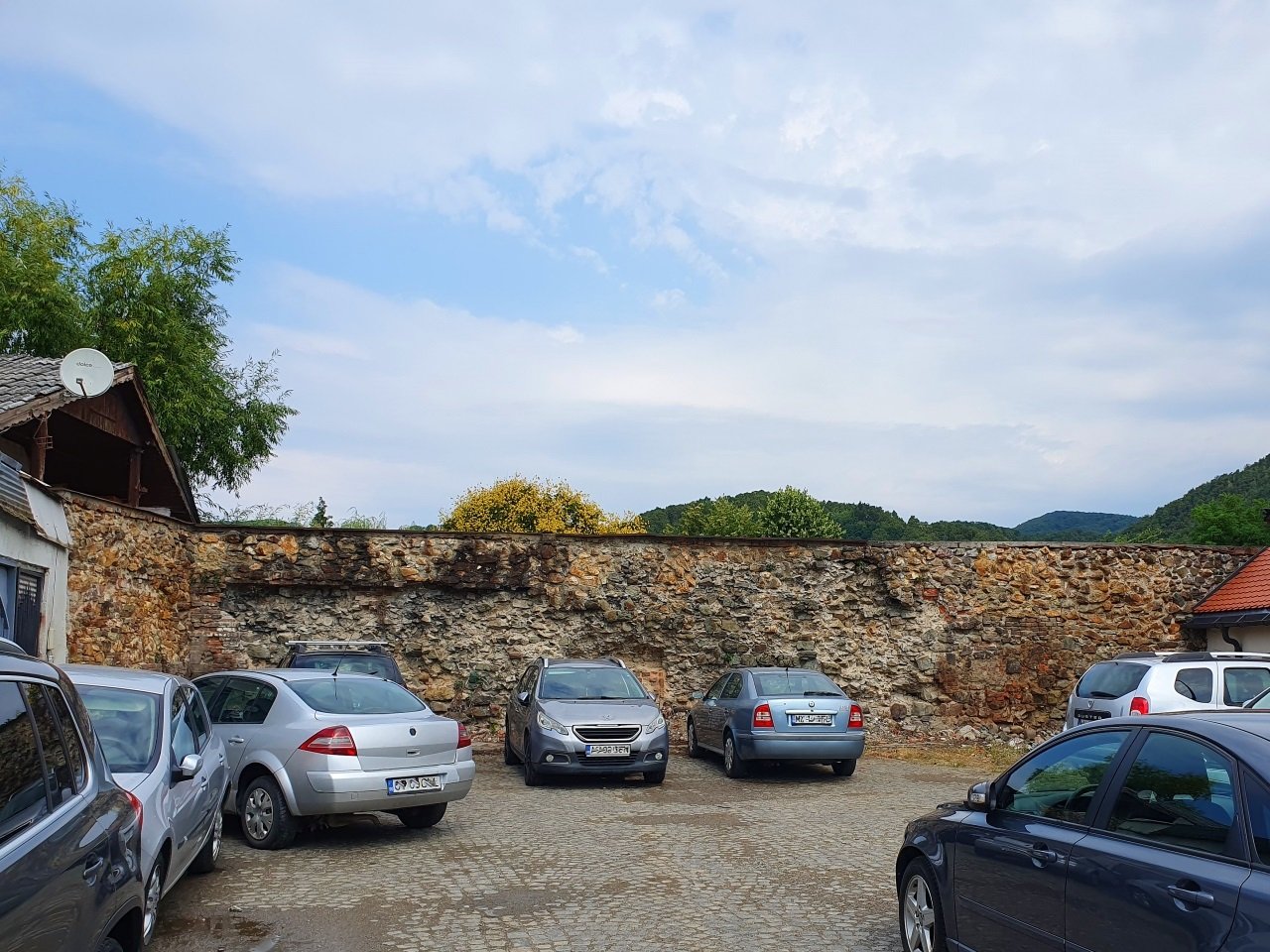
Next to the museum, the old wall of the city. The Săsar River is on the other side of the wall.
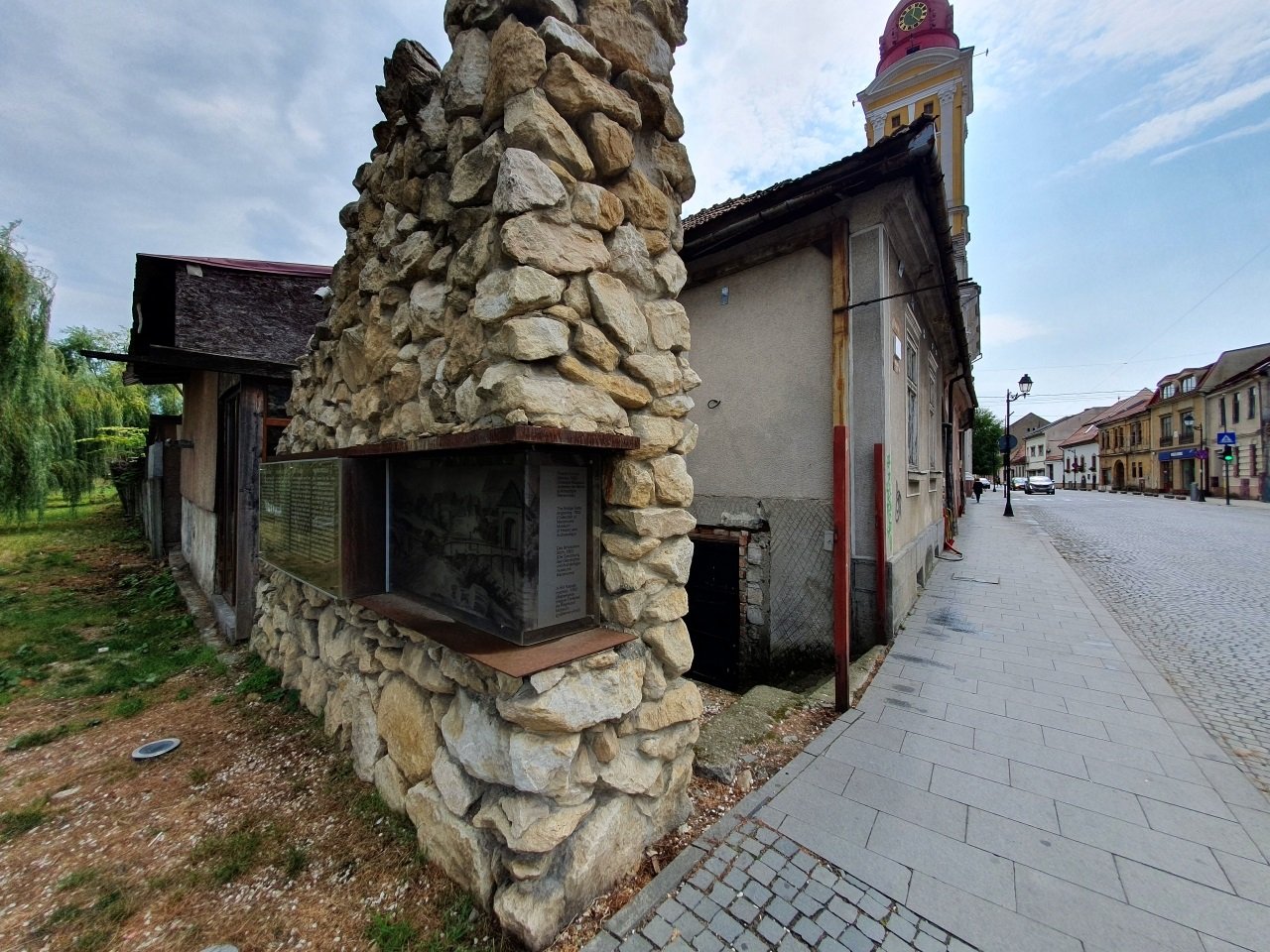
The Town Wall, built in 1469 by King Matthias of Hungary. This is the Gate of the Bridge.
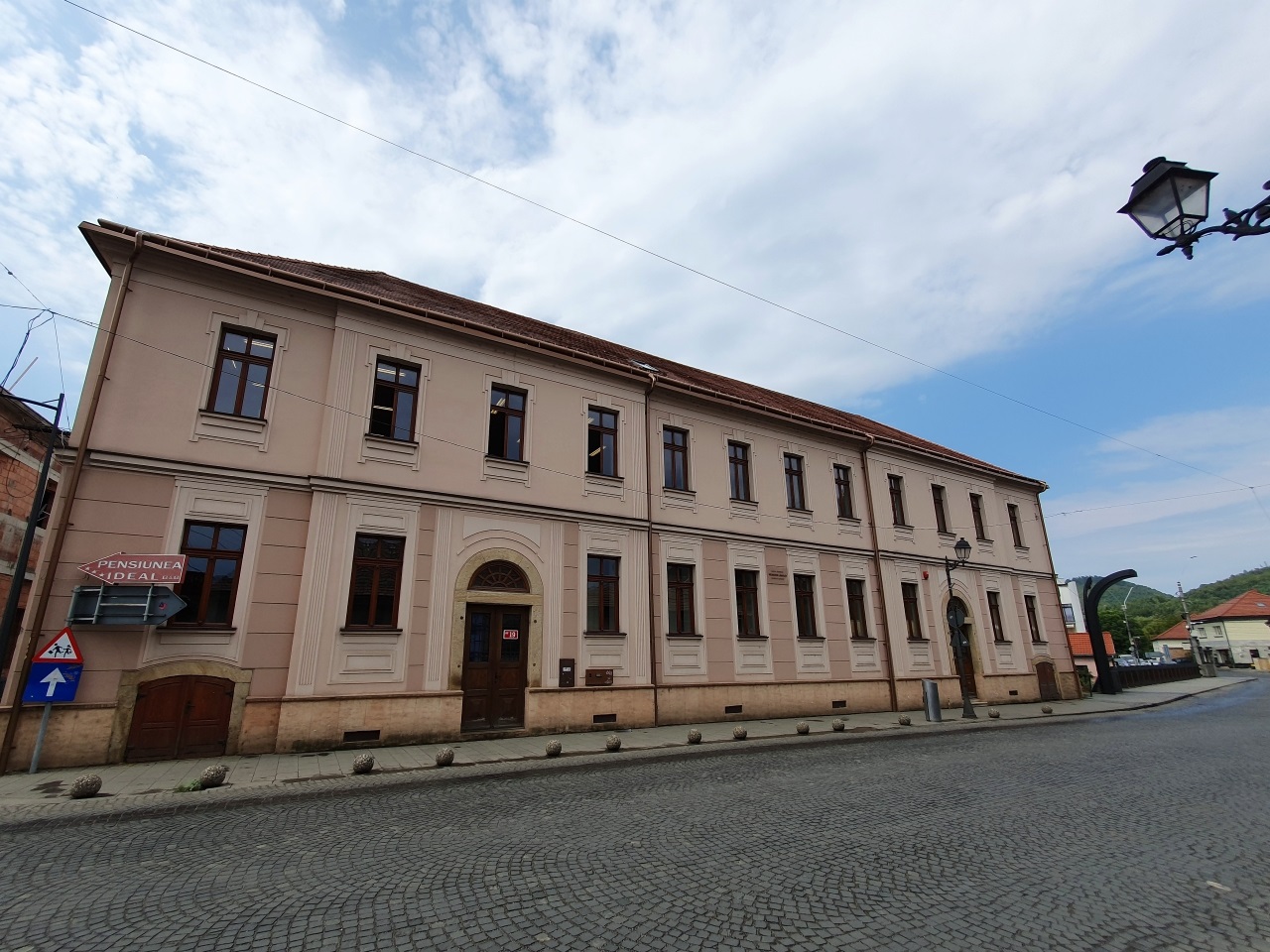
Németh László High School, in the same area.

The Calvinist Church (or the Reformed Church), built in 1792 in the neoclassical style.
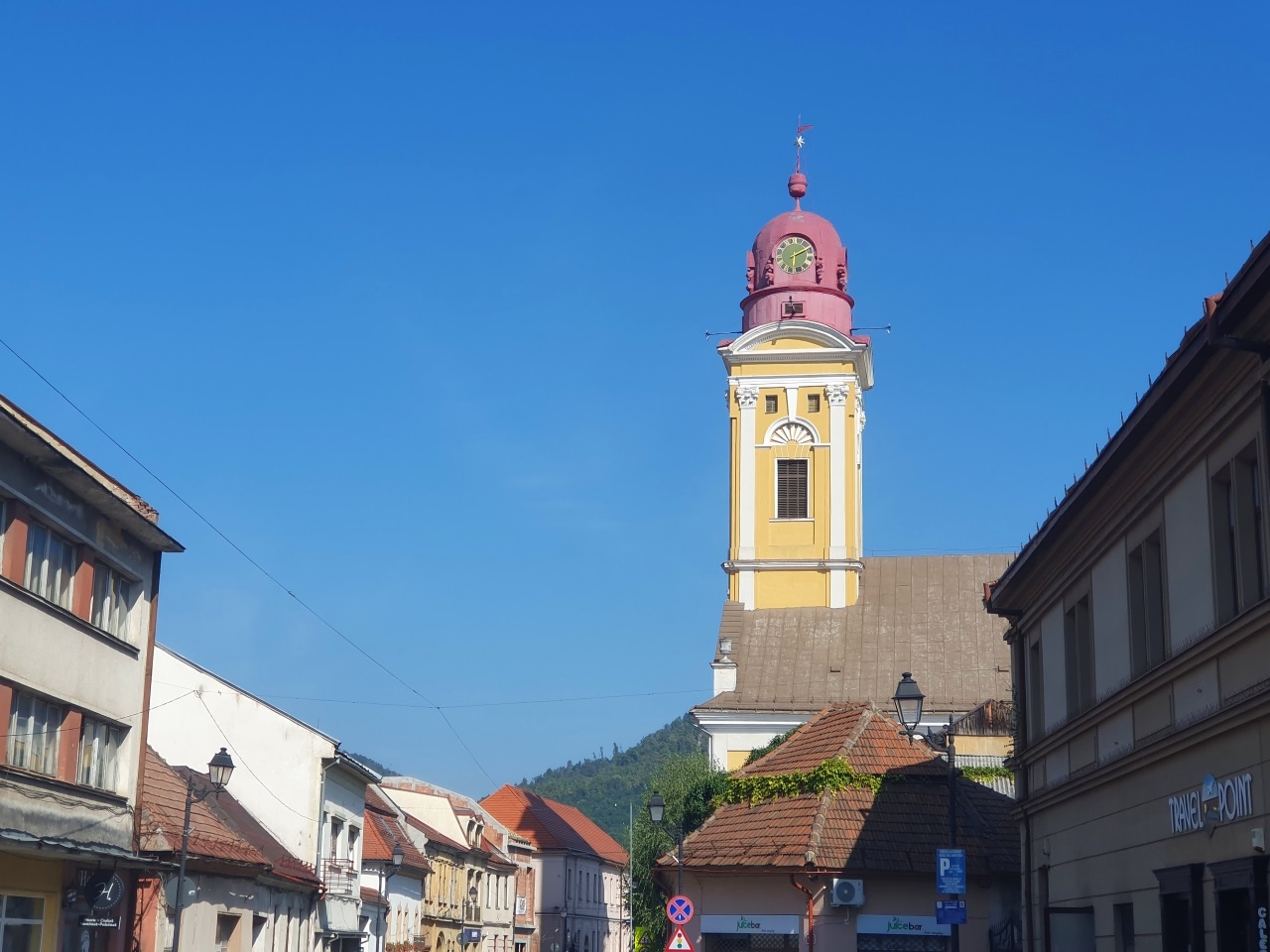
The church was a favorite subject of the Baia Mare School of Painting, appearing in many paintings.
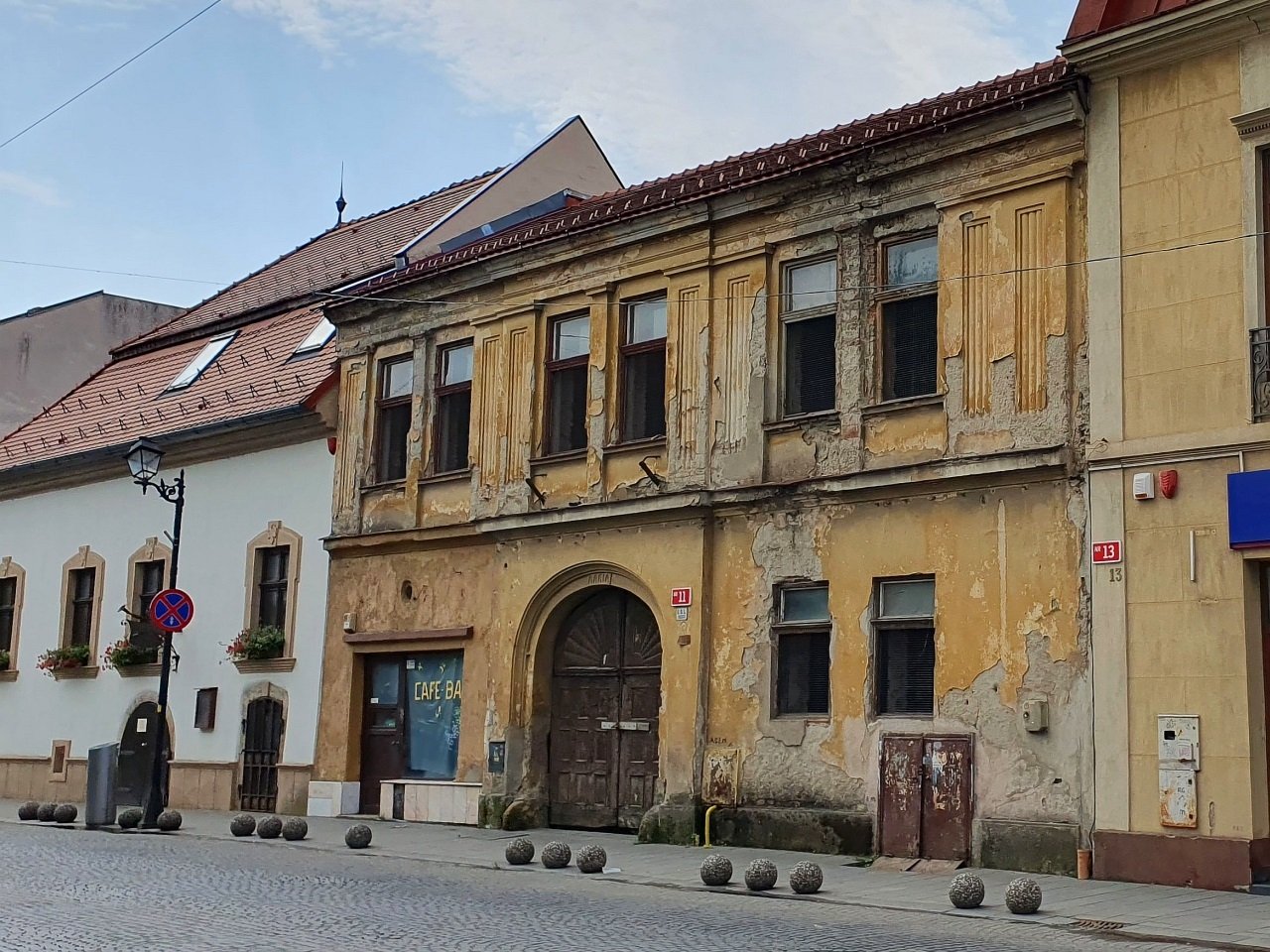
Opposite the church… ruin… Baia Mare is a place of contrasts…
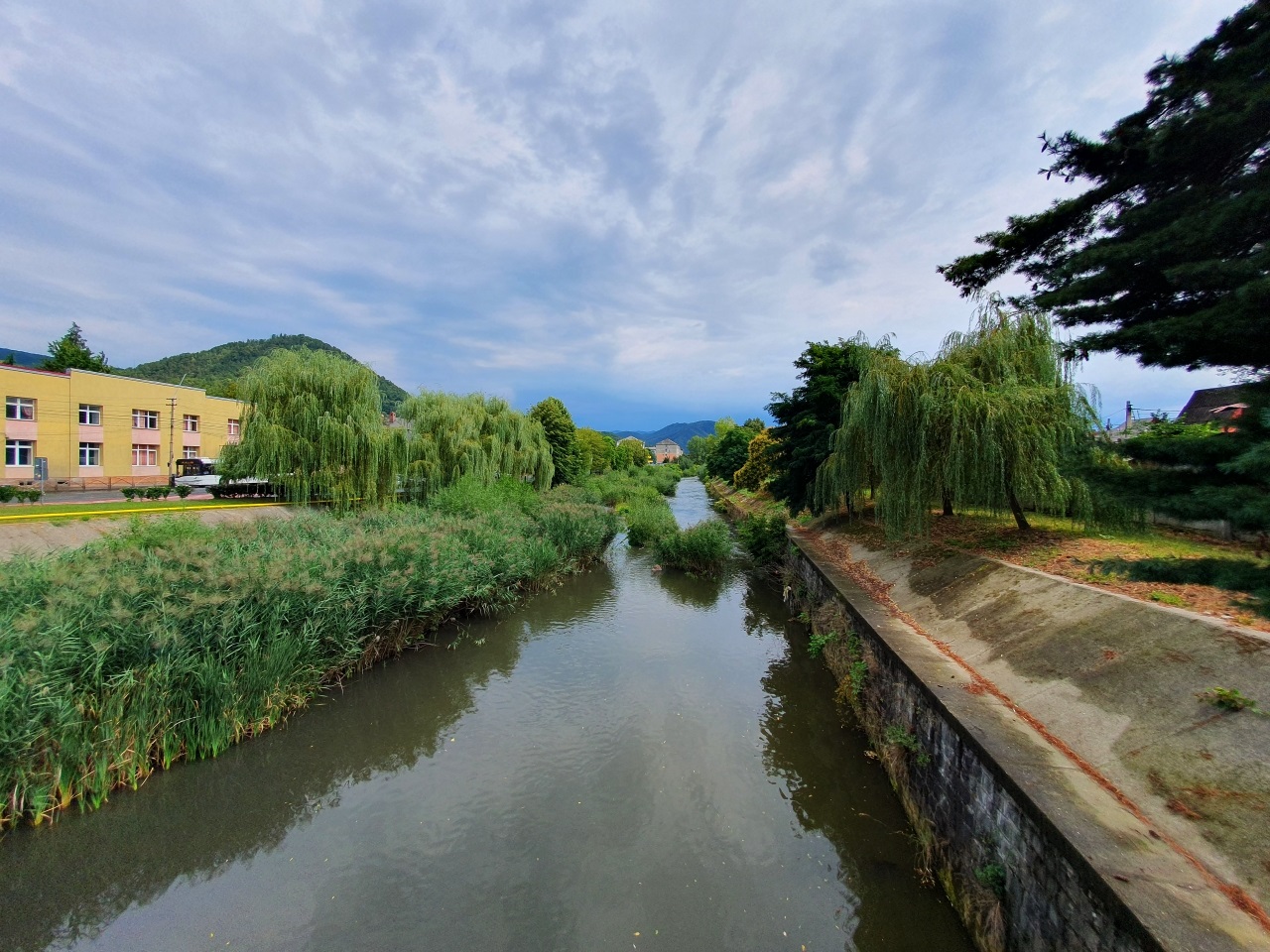
The Săsar River, unmanaged by the administration, suffocated by reeds and mosquitoes…
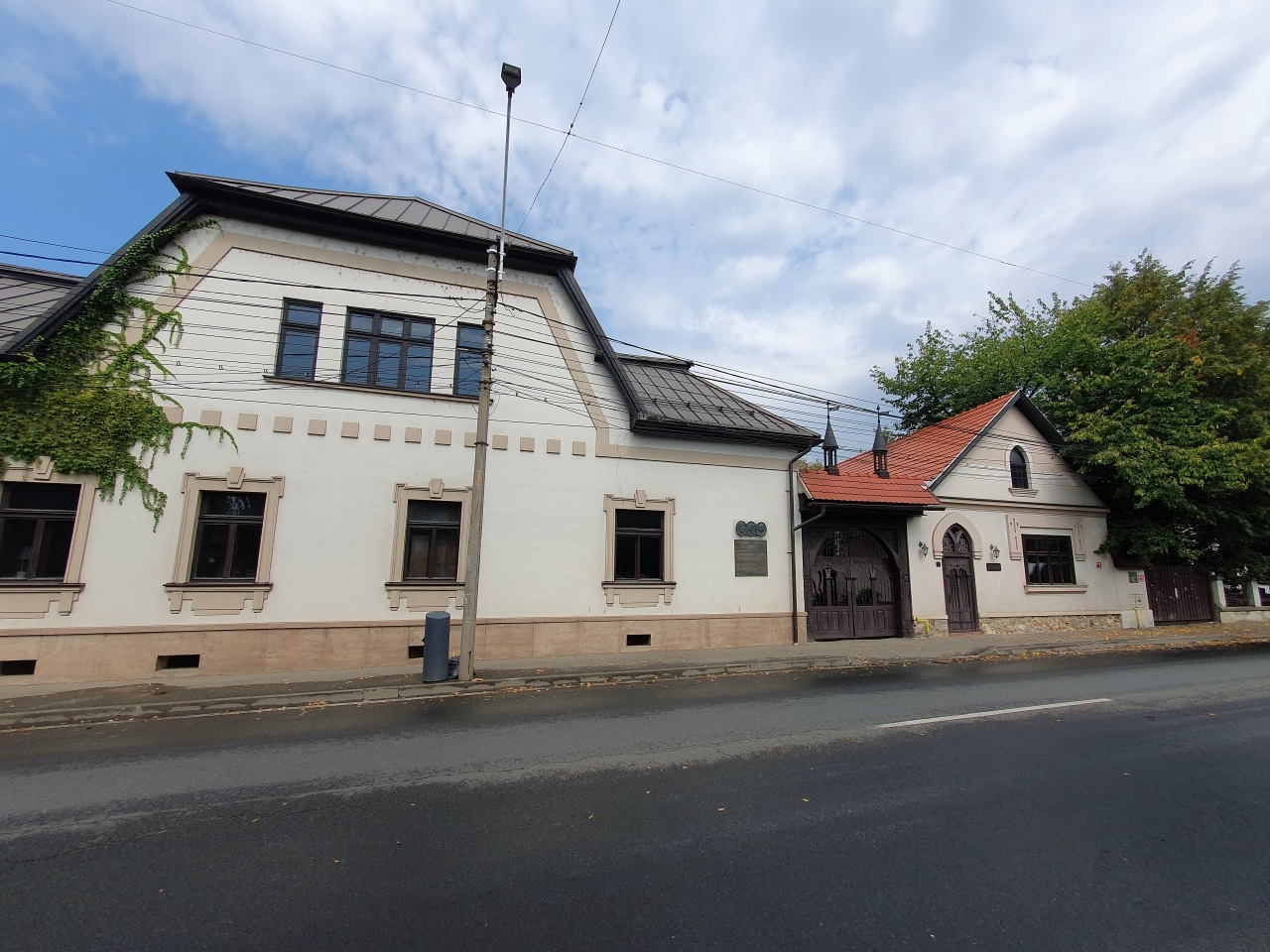
Count Teleki Sándor’s House, built in the second half of the 1870s. The count lived his last years here. Nowadays a Hungarian cultural center, the Teleki Ház.
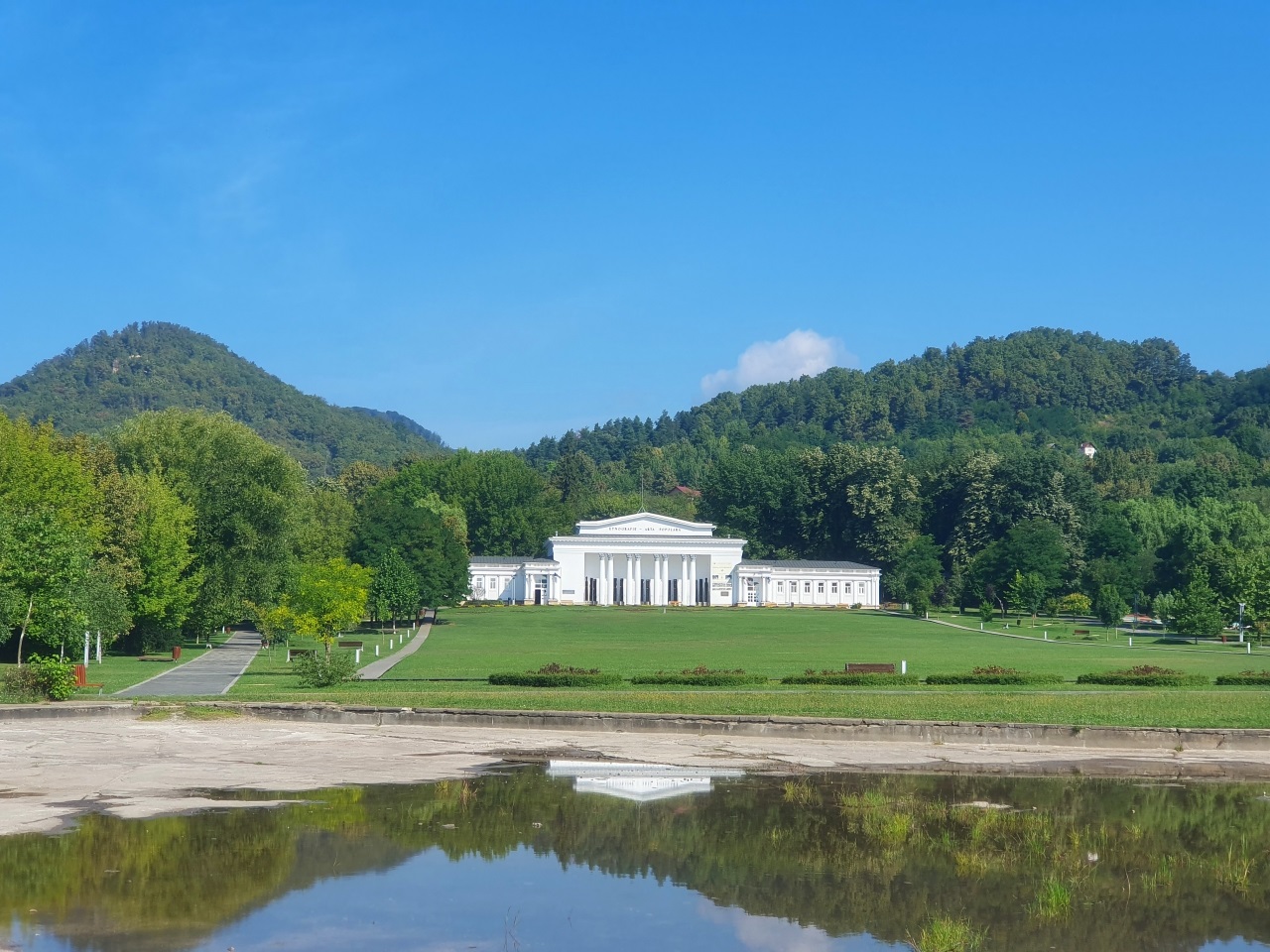
County Museum of Ethnography and Folklore, former Summer Theatre, built in 1978. The lake in front of it is almost dry… because… “no money”… But the mountains and the forests are beautiful at this time of the year. The place in front of the museum is often used for public gatherings. Behind the Ethnography Museum is the Village Museum, built on the Virághegy (Flower Hill, Dealul Florilor).
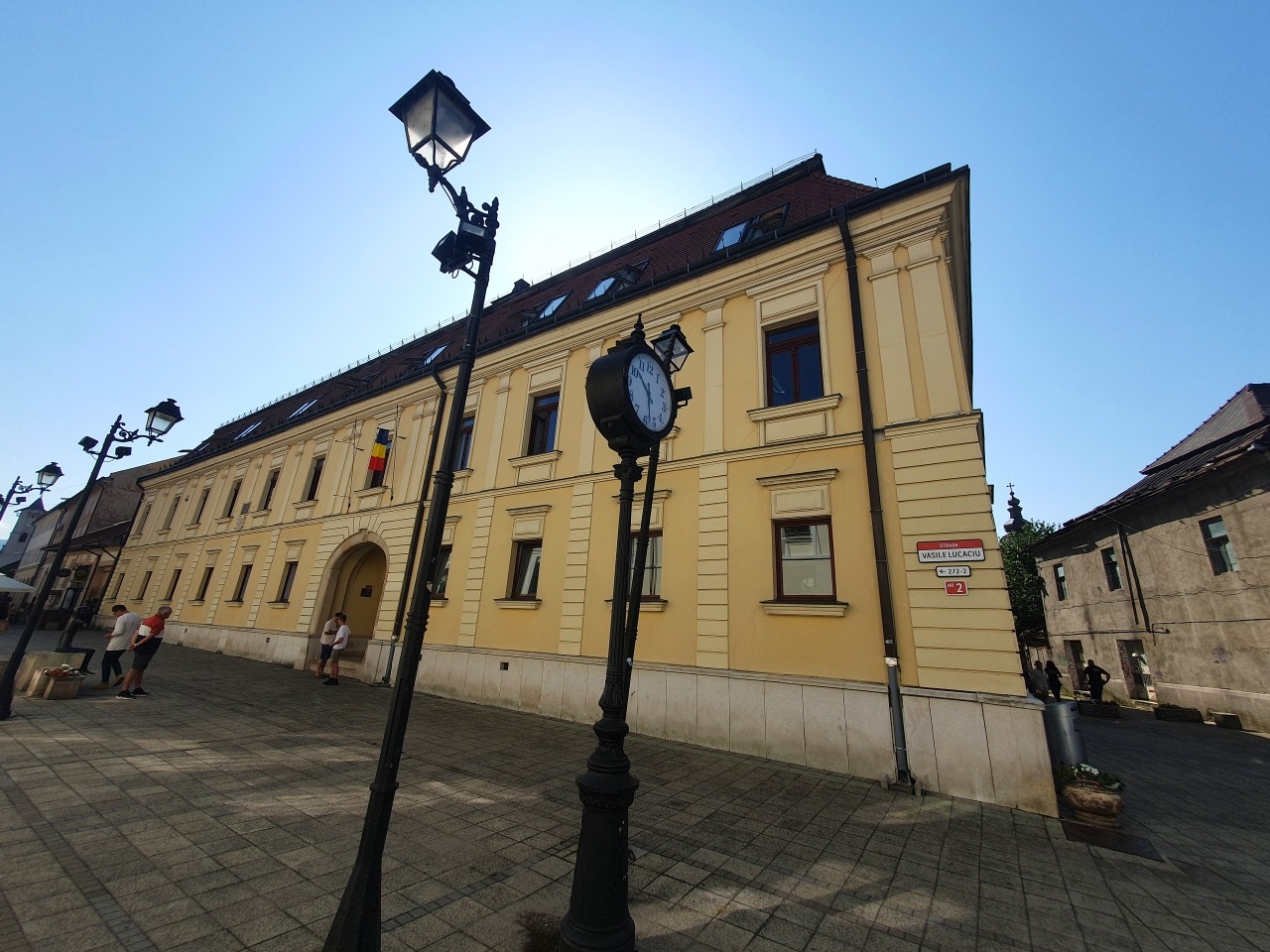
Back to the Black Eagle Inn, the ancient town hall, with the clock and a skinny statue in front of it. I involuntarily caught the people around the building in zombie-like attitudes…

One last glance at the old town. That is the “Baia Mare blue sky”, the color so much sought after by many painters coming at the Artist’s Colony not too far away, since 1902…
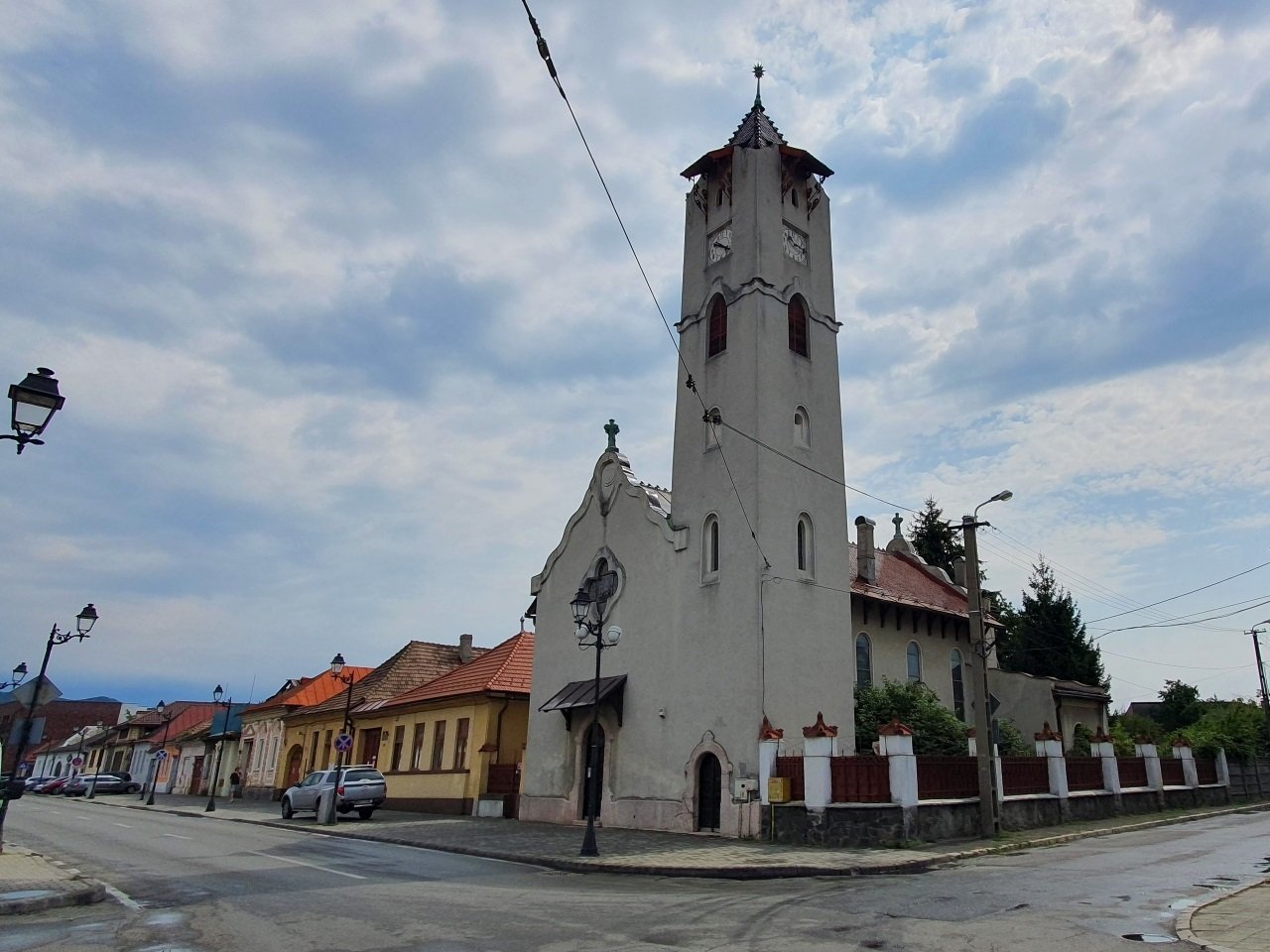
The Lutheran Church, built in 1911 in the Art Nouveau style.

The Baia Mare Synagogue, built in 1885 in neo-Baroque style. A complete ruin. Sad.
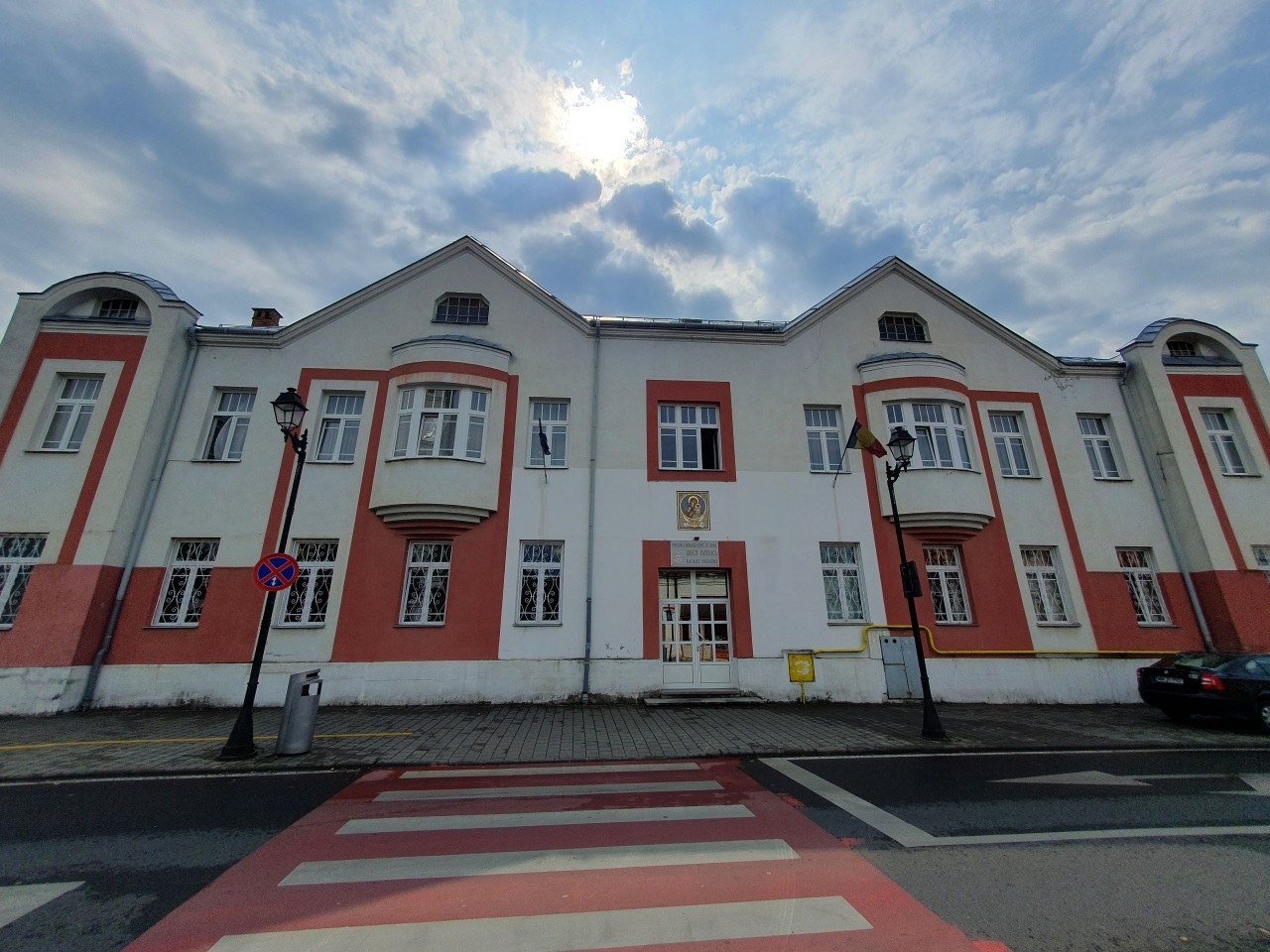
The headquarters of the Greek-Catholic diocese.
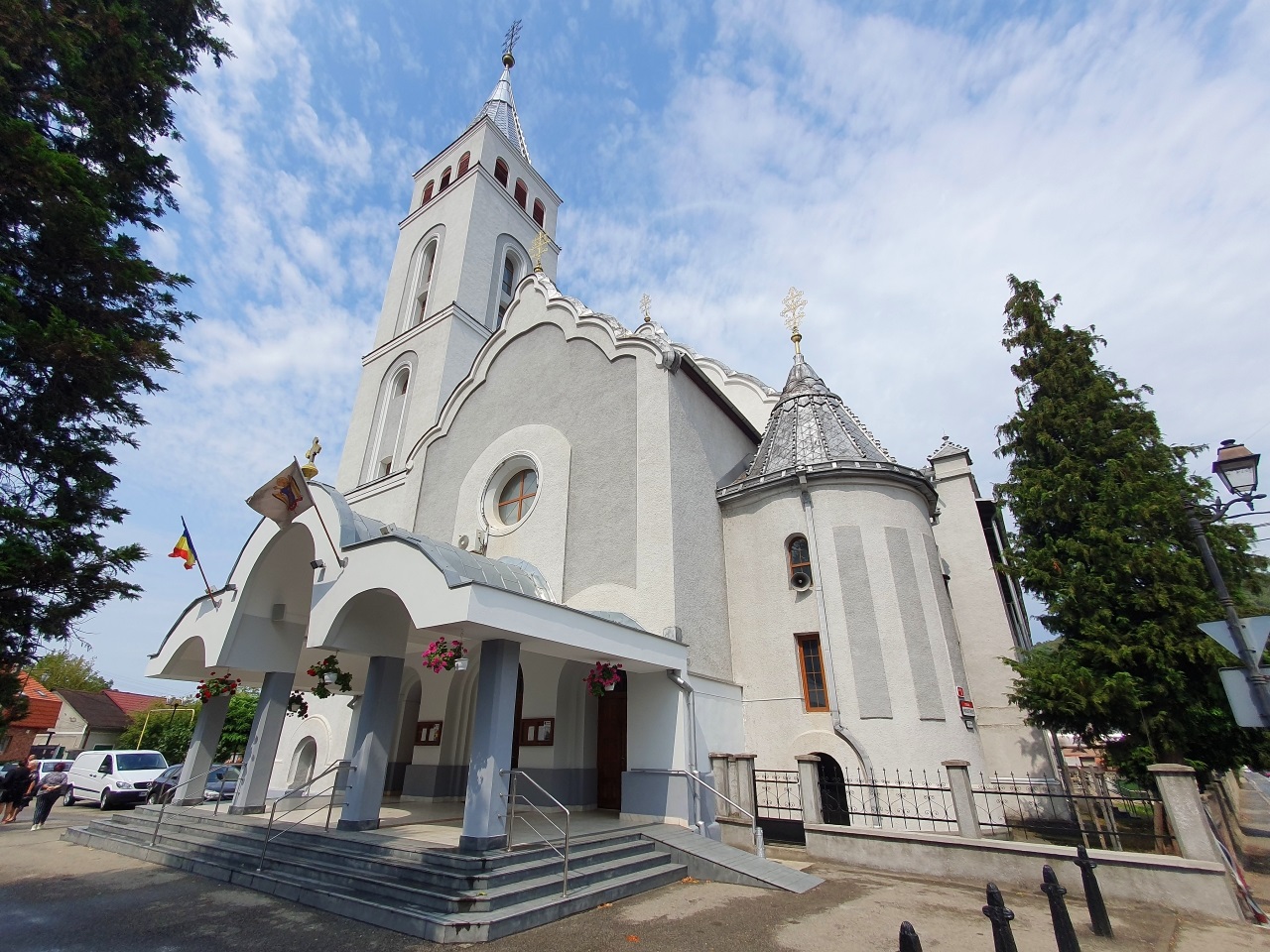
The Orthodox Cathedral of the Assumption, built in 1909 for the Greek Catholics, given to the Orthodox Church in 1948. Still disputed between the 2 religious communities.
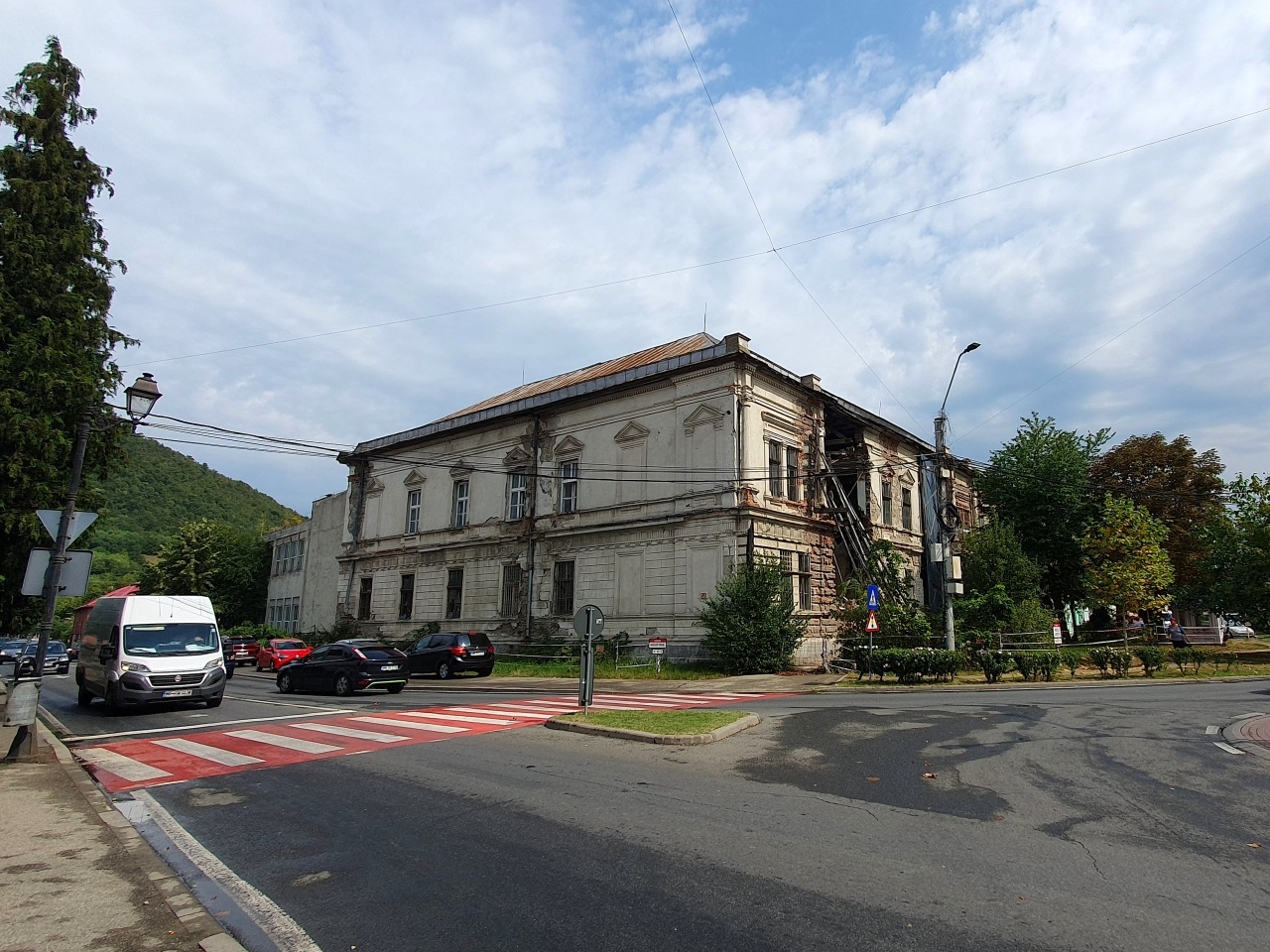
The former Hungarian State Civil Girl’s School, a heartbreaking ruin.
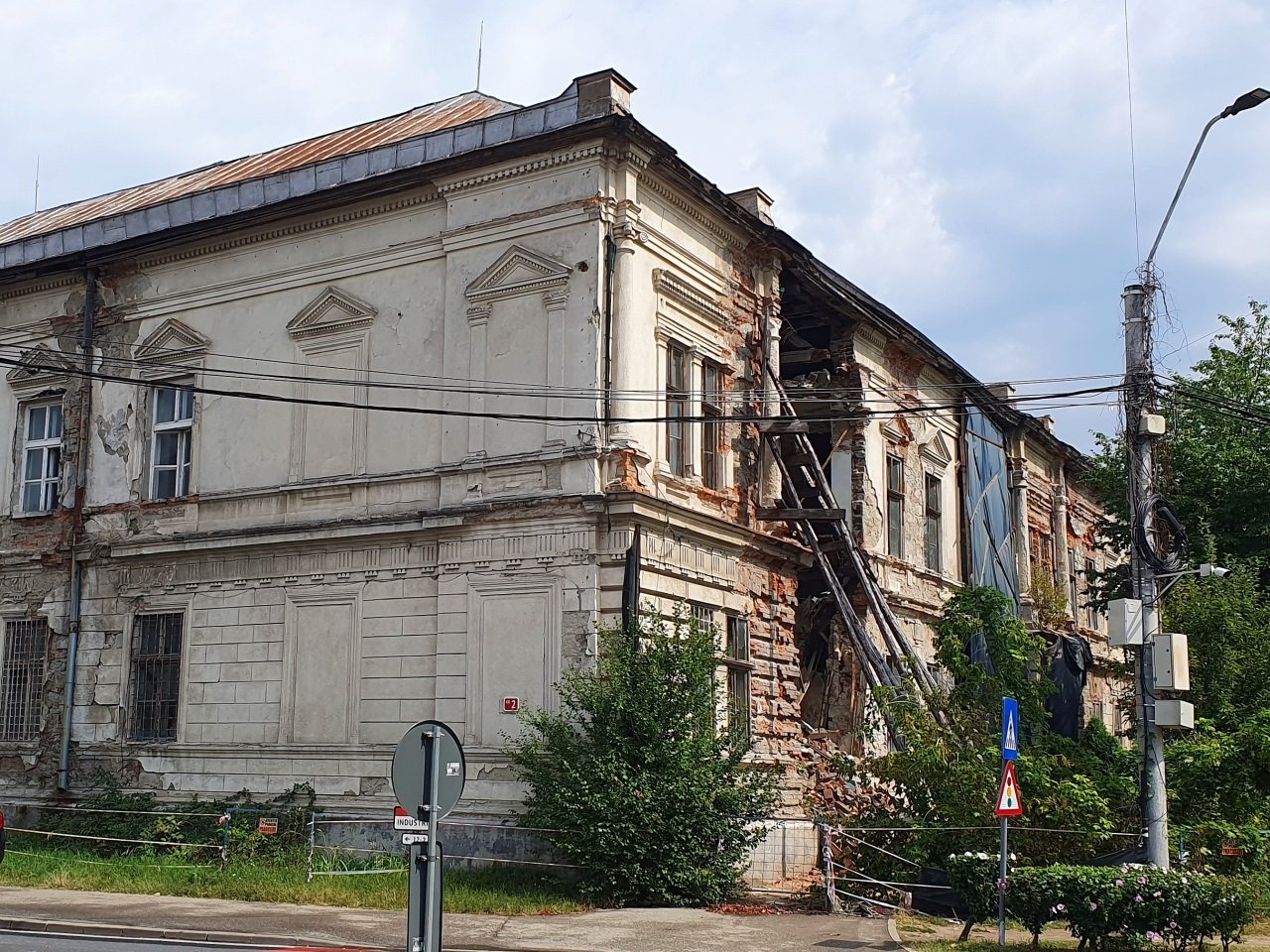
You can see wooden poles supporting the walls so they don’t fall…
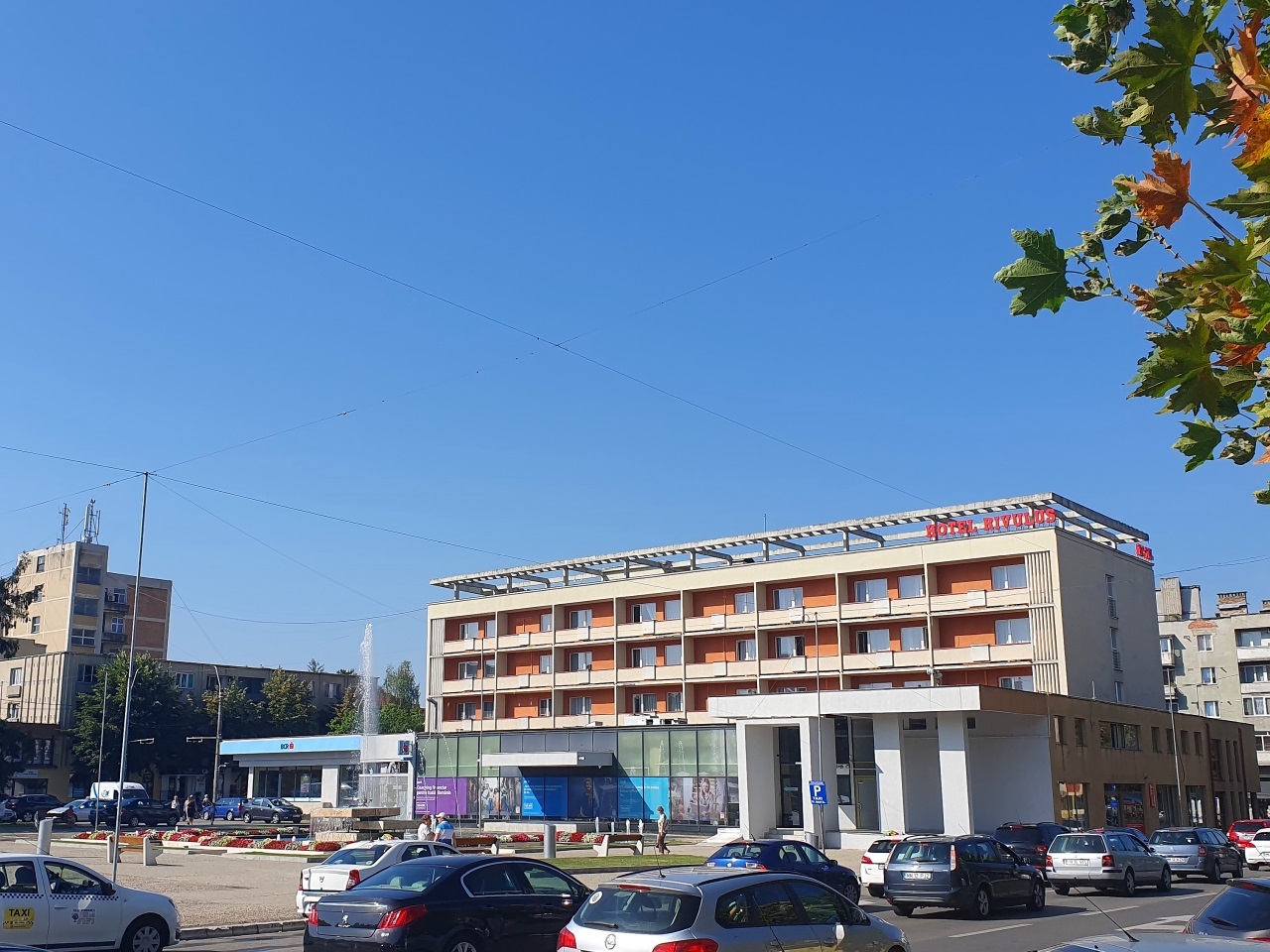
And back to modern (communist) times, with the Rivulus Hotel next to the Bucharest Place (or Plateau).
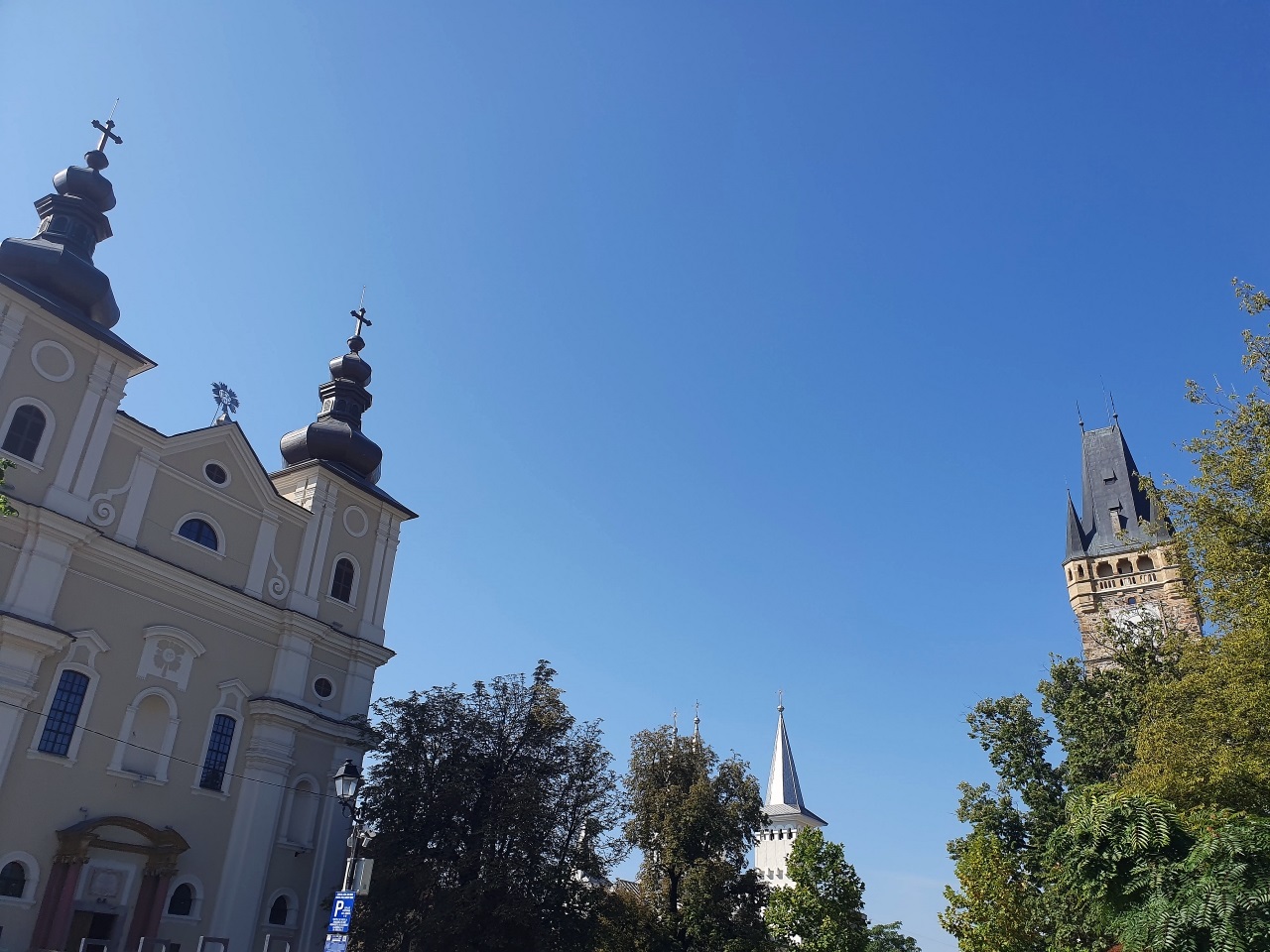
Thank you for your patience, it’s been the longest photo article ever!
Rivulus Dominarum

